March / April 2024
Prune Integrated Pest Management
Carbon Footprint in Almond Orchards: A Reason to Care
Irrigation and Nitrogen Management Plans
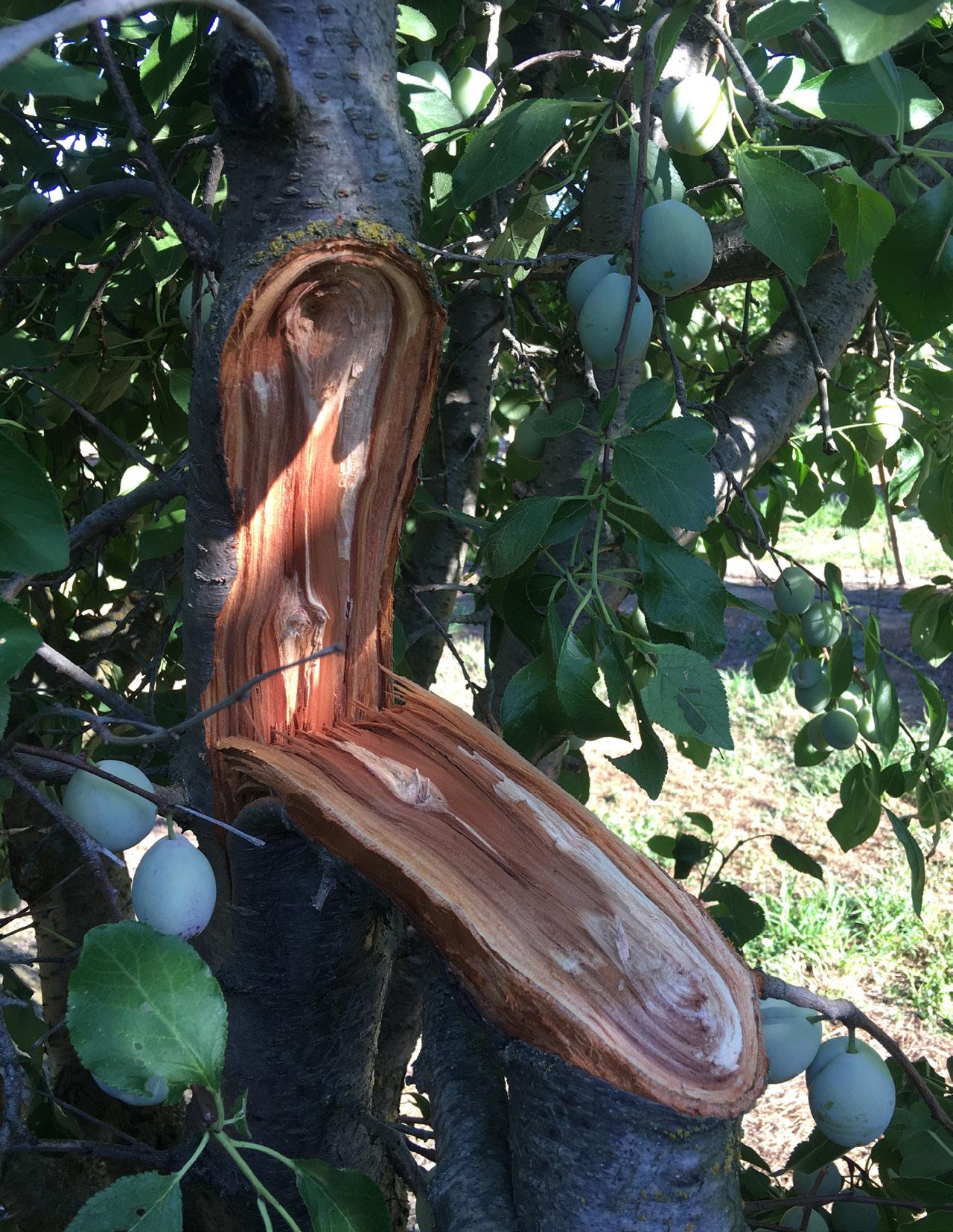

Volume 9: Issue 2 POWERED
JCS MARKETING
BY
Agriculture in this region is unlik else, and successful growers nee plan that meet s the unique goa and challenges we face. Get pre the advanced product s and agr knowledge you need to suppor t crops, your soil and a sustainab

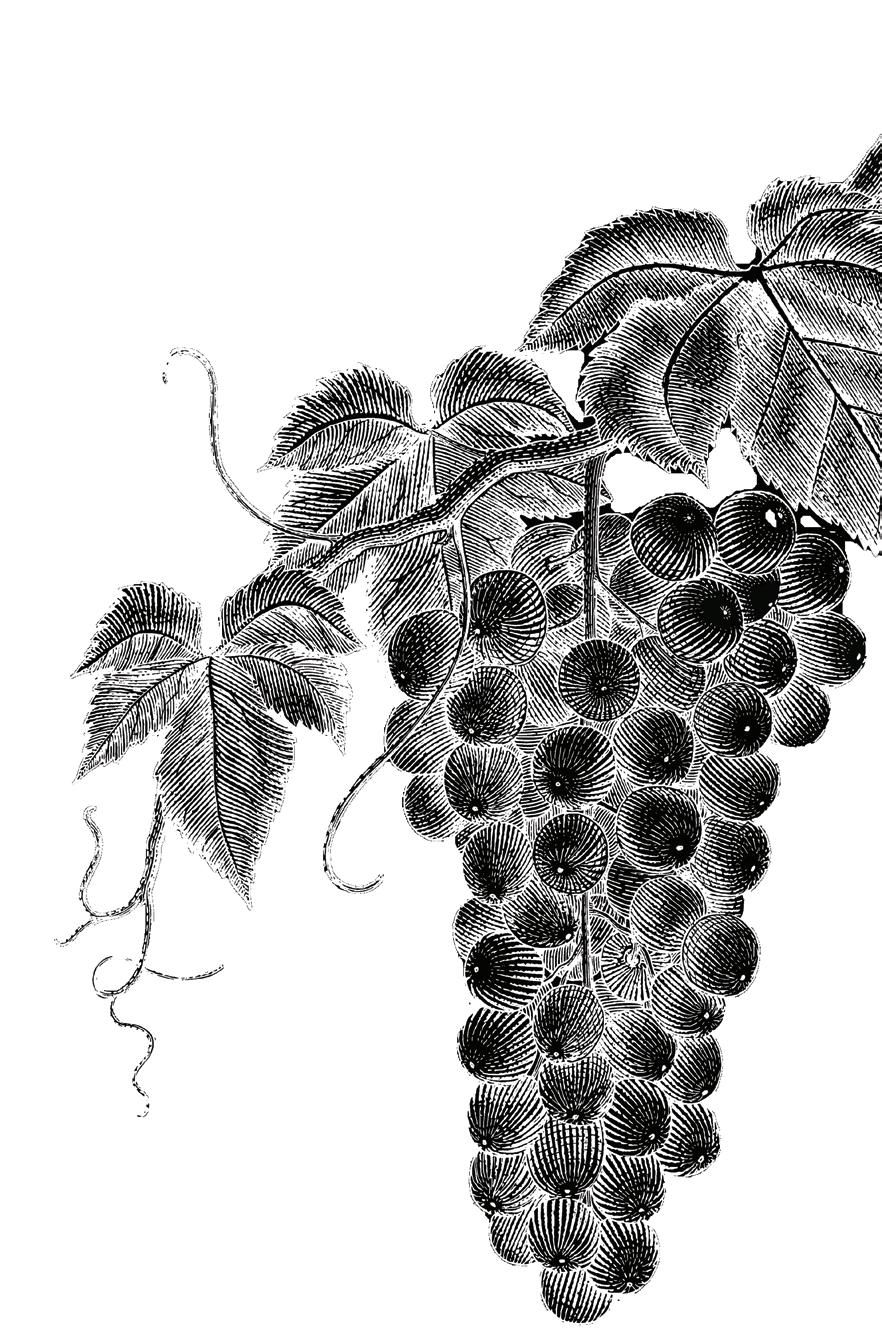
2 Progressive Crop Consultant March / April 2024
Sure -K® and Kalibrate® are registered trademarks of AgroLiquid. © 2023 AgroLiquid All Rights Reser ved Find an AgroLiquid dealer near ApplyLessExpectMore.co Apply less, expect more?

IN THIS ISSUE
4
10
Prune Integrated Pest Management
Carbon Footprint in Almond Orchards: A Reason to Care
14
Irrigation and Nitrogen Management Plans

16
20
Pre-Bloom Foliar Boron Application on Olive May Improve Yield
Research Update on Broccoli Alternaria Head Rot Management
26
32
34
California

PUBLISHER: Jason Scott
Email: jason@jcsmarketinginc.com
EDITOR: Taylor Chalstrom
ASSOCIATE EDITOR: Cecilia Parsons
Email: article@jcsmarketinginc.com
PRODUCTION: design@jcsmarketinginc.com
Phone: 559.352.4456
Fax: 559.472.3113
Web: www.progressivecrop.com
CONTRIBUTING WRITERS & INDUSTRY SUPPORT
Matthew Fidelibus
Viticulture CE Specialist, UC Davis
Jim Adaskaveg
Professor of Plant Pathology, Department of Microbiology and Plant Pathology, UC Riverside
Ellie Andrews
Ph.D., UCCE Farm Advisor, Sonoma County


Devin Clarke PCA, CCA
Elizabeth Fichtner
Ph.D., UCCE Farm Advisor, Tulare County
Alejandro Hernandez
Graduate Student, Department of Plant Pathology, UC Davis
Greg Montez PCA
Franz Niederholzer
UCCE Farm Advisor, Colusa and Sutter/Yuba Counties
Nicole Nunes
CCA, Environmental Scientist, CDFA Fertilizer Research and Education Program FREP
Jason Scott
MS, Publisher/ CEO, Progressive Crop Consultant, JCS Marketing Inc.
Florent Trouillas
Associate Professor of Cooperative Extension, Department of Plant Pathology, UC Davis,
Yu-Chen Wang
UCCE Plant Pathology Advisor, Santa Cruz, Monterey and San Benito Counties
UC COOPERATIVE EXTENSION ADVISORY BOARD
Surendra Dara Director, North Willamette Research and Extension Center
Kevin Day UCCE Pomology Farm Advisor, Tulare and Kings Counties
Elizabeth Fichtner UCCE Farm Advisor, Kings and Tulare Counties
Katherine Jarvis-Shean UCCE Orchard Systems Advisor, Sacramento, Solano and Yolo Counties
Steven Koike Tri-Cal Diagnostics
Jhalendra Rijal
UCCE Integrated Pest Management Advisor, Stanislaus County
Mohammad Yaghmour
UCCE Area Orchard Systems Advisor, Kern County
The articles, research, industry updates, company profiles, and advertisements in this publication are the professional opinions of writers and advertisers. Progressive Crop Consultant does not assume any responsibility for the opinions given in the publication.
March / April 2024 www.progressivecrop.com 3
20 26
4
Lead
Wet Years Can
to Aerial Phytophthora Outbreaks in Almond Orchards
of
Update: Neonicotinoids Growing the Crop Consultant Industry One Reader at a Time
Code
Regulations
Prune Integrated Pest Management Major, Unique Pests Include Aphids and Canker Diseases
By FRANZ NIEDERHOLZER | UCCE Farm Advisor, Colusa and Sutter/Yuba Counties
In the Sacramento Valley orchard business, the grass is blue and the sky is green. The primary nut crops, almonds and walnuts, are struggling with poor grower returns while cling peaches and prunes are making (some) money. That’s a general reversal of fortunes for the stone fruit crops from the last 15 to 20 years. How long this success will continue is far from certain as both peach and prunes require high management focus and production costs and both face significant international competition. Still, the stone fruit crops in the region are, at least for now, a lifeline for those growers able to put in the management effort to grow a large, quality crop while controlling costs and so help support their entire farming business.
Careful pest management is a key part of delivering a quality crop. Partnering with a knowledgeable PCA/CCA is valuable for all growers, but particularly so for prune growers. Prunes generally have fewer and more manageable pests compared to other crops in the region but have major issues in slow-acting, chronic diseases.
The focuses of this article are the relatively unique pests of prune compared to other common fruit and tree nut crops in the northern growing regions of the state. Many prune pests are familiar to PCAs who grow/work in almonds and/or peaches. These include blossom brown rot, leaf rust, fruit brown rot (monilinia hull rot in almonds), scales (especially San Jose scale), peach twig borer (PTB) and webspinning mites.
The common pests of almonds and stone fruit, which should be familiar to PCAs, will be covered briefly.
It is worth noting that, more than any crop grown in the north state, prunes can suffer weather-related crop failures. Since 2004, there have been six years with regional or statewide prune crop failures related to sudden hot or extended cool weather at bloom. In those years, alert PCAs are often the key to careful use of a limited budget to maintain orchard health and prepare for next year.
Insect and Mite Pests
The key insect and mite pests of prunes are aphids, peach twig borer (PTB), webspinning mites, and scale. Two of the four general pest groups (webspinning mites and scale) are often controlled by natural predators as long as they are preserved by careful, selective pesticide use to control the remaining pests of note (aphids and PTB).
Aphids
Two aphids, mealy plum aphid (MPA) and leaf curl plum aphid (LCPA), are the key pests of prune. High populations of plum aphid feeding in prune trees in the spring and into the summer can reduce tree size, fruit sugar and return bloom.
These aphids have similar life cycles and so are managed similarly. Both species move into prune orchards in the fall, mate and lay eggs in the late fall. Eggs



4 Progressive Crop Consultant March / April 2024
ContinuedonPage6
Bacterial canker symptoms appear early in the growing season (all photos by F. Niederholzer.)
Mealy plum aphids prefer to feed on the backs of leaves. Turn leaves over when scouting for early signs of infection.
Khushwinder Singh , Research Agronomist, AgroPlantae
As the demand for sustainable and eco friendly agricultural practices grows, biostimulant products have emerged as key players for enhancing crop productivity while minimizing environmental impact. According to USDA 2019 report, A plant biostimulant is a substance, microorganism, or mixtures, that, when applied to seeds, plants, the rhizosphere, soil or other growth media, act to support a plant's natural nutrition processes independently of the biostimulant's nutrient content. Plant biostimulants contain an array of substances and/or microorganisms that stimulate growth of plants through diverse mechanisms such as an efficient absorption of nutrients by plant roots or their use in the plant tissue. This efficiency results in stress mitigation, improved yields, and reduces the need for excessive fertilizer application. As California faces challenges related to water scarcity and degrading soil health, biostimulants offer a sustainable solution by maximizing the use of available resources.
California's diverse climate expose crops to various environmental stresses, such as drought, heat, and salinity. Biostimulants help plants build resistance to these stressors, ensuring better crop performance even in challenging conditions. This is particularly crucial in a state where water resources are often limited. Biostimulants promote a healthy soil microbiome, fostering beneficial microbial activity . A balanced soil microbiome contributes to improved nutrient cycling, disease resistance, and overall soil structure. This is essential for sustaining the long term productivity of California's agricultural lands. With increasing awareness of the environmental impact of conventional farming practices, there is a growing interest in sustainable alternatives. Biostimulants align with the principles of sustainable agriculture by minimizing the use of synthetic chemicals and promoting a more ecological approach to crop management.
AgroPlantae has been producing and researching biostimulants for the last 15 years, with tailored applications for diverse crops and weather conditions. Among our products, EarthMAX is a biostimulant derived from amino acids, acts as a rapid action nutrient synergist. This soil applied biostimulant reinvigorates vegetative development, functioning as a catalyst for nutrient uptake and delivering an energy boost during environmental or physiological stress. EarthMAX elevates overall crop quality by offering specialized plant extracts for immediate uptake and benefits. By enhancing crop resilience to stress, EarthMAX optimizes fruit retention, quality, and yield , even at a low application rate of 1 2 pints per acre. In this article we focus on EarthMAX research trials conducted in California in collaboration with tomato growers. EarthMAX demonstrated a substantial increase in marketable yield, providing growers with a high return on investment.
California produces about one third of world ’s and 95% of nation’s processing tomatoes. California tomatoes, characterized by their superior quality and prolific production, are subjected to various environmental stresses and nutrient limitations that can impact overall crop yield. To address these challenges, the utilization of biostimulants has garnered attention. Biostimulants has been proven to exert a beneficial influence on plant growth and development by promoting better nutrient uptake, plant growth and higher fruit development.
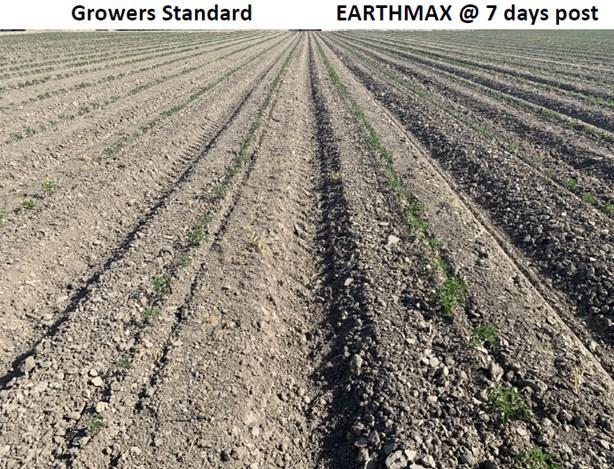

March / April 2024 www.progressivecrop.com
EarthMAX
Picture 1 shows the comparison of grower standard and EarthMAX treated beds.
hatch during prune bloom. Aphid populations can increase rapidly in warm springs, ‘outrunning’ biological control from many natural enemies including ladybugs, lacewings, etc. Plum aphids move out of prune orchards in the late spring (LCPA) or summer (MPA) as shoot growth slows, although they can remain into the summer in young, vigorous orchards with active shoot growth. MPA spend their summers in an alternative host such as reed grass or cattails. LCPA spend the summer on plants of the Asteraceae (daisy) plant family (daisies, sunflowers, thistles, etc.)
There is no economic threshold for MPA when monitoring before bloom. Finding a single aphid egg in an orchard means that orchard should be sprayed based on UC IPM Guidelines. Finding no eggs in the dormant season doesn’t mean they aren’t present, so many growers and PCA manage aphid using orchard history. Where there is a history of aphid feeding in the orchard, many PCAs treat preventatively with a research-proven low rate of pyrethroid in the late fall or winter (the bottom of the labeled rate for Asana or Warrior were very effective in controlling both species in many UC field studies in fall or dormant timings the last 20 years.)
Because pyrethroids that drift or runoff to creeks and ditches can harm aquatic life (see article at the end of the column), effective but not excessive use rates are an easy first step to reducing environmental risk with these materials. Solid but not excessive pyrethroid rates (for example, 6 to 8 oz/acre Asana) delivered excellent peach twig borer control in multiple UC trials over many years. These rates also deliver excellent aphid control. What about pesticide resistance? Alternating peach twig borer control chemistries (e.g., dormant spray one year, B.t. at bloom the next year) is an effective way to manage pesticide resistance without the environmental risk of high rates of pyrethroid use.
Two applications of 4% oil during bloom is also effective in smothering aphid and does not harm the prune flowers
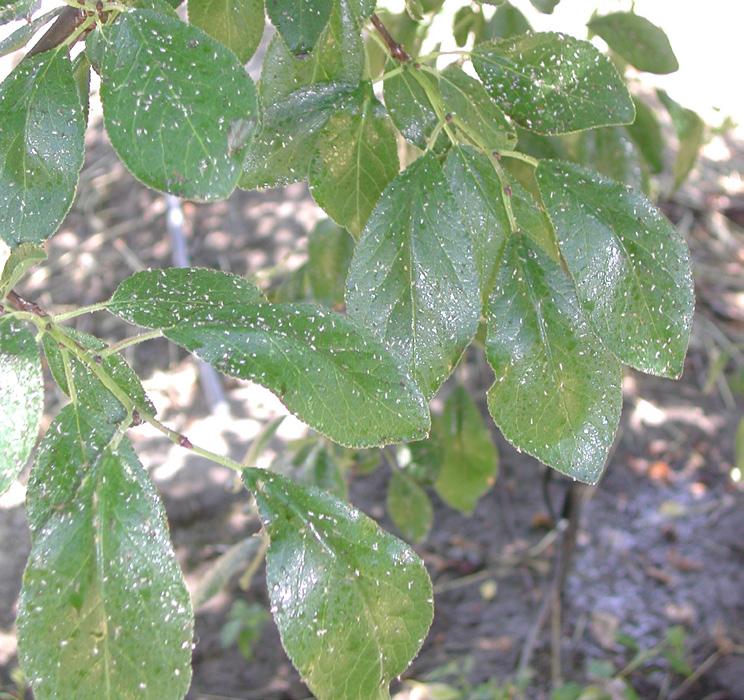
or fruit set. If no pre-bloom or bloom sprays are applied, growers and/or PCAs should monitor orchards after bloom for signs of aphid colonies. See post-bloom monitoring practices in the references at the end of this column. Even if aphid spray(s) were applied, it’s a good idea to spot-check areas of the orchard where spray coverage might have been sketchy (e.g., row ends near a road, structures, etc.) Systemic or translaminar materials such as neonicotinoids (Assail, Actara, imidacloprid), BeLeaf or Movento are effective on post-bloom colonies as the curled leaves can shelter the pests from direct contact with pesticides. Use of neonics and/or pyrethroids after bloom can harm beneficial insects that control spider mites or scale. Post-bloom, oil does give good control where it reaches aphids (won’t get into curled leaves). However, using oil after bloom risks smothering parasitoid larvae along with aphid.
Peach Twig Borer
Peach twig borer (PTB) is a regular pest of prune and could be considered a key pest, and is one that often results in unacceptable damage and so frequently must be controlled. Fruit skin damaged by PTB feeding is an entry point for brown rot fungi. Growers report a good PTB management program helps con-
trol fruit brown rot, especially in years and/or locations where orchard humidity and infection risk is increased as fruit mature (late July/early August). As mentioned above, dormant pyrethroid sprays deliver effective PTB control. Another option are bloom sprays containing B.t. (DiPel, Javelin, etc.). This is the only recommended bloom insecticide; others harm bees.
Miss dormant or bloom spray for PTB? Post-bloom applications of Intrepid or Altacor can control PTB too without flaring mites when orchard monitoring shows a need and used to time sprays. Monitor PTB after bloom using pheromone traps and degree day calculations using the program described in the Prune Pest Management Guidelines (ipm.ucanr.edu/agriculture/prune). A treatment threshold is included in the guidelines.
Mites and Scale
Webspinning (spider) mites and scale can be controlled by natural predators in many orchards by avoiding in-season use of broad-spectrum pesticides such as pyrethroids or neonics. See monitoring details for spider mites in the references including treatment thresholds. Scale, especially San Jose scale, should be monitored during the dormant peri-
6 Progressive Crop Consultant March / April 2024
ContinuedfromPage4
No need to turn over leaves once the colonies grow. Honeydew will show you where the aphids are in the trees.
od and treated if populations exceed the threshold described.
Diseases of Fruit, Flowers and Foliage
Three major fungal diseases of fruit, flowers and foliage can impact prunes: blossom brown rot, fruit brown rot and leaf rust. All are best controlled by fungicide(s) applied before rainfall and the disease infections promoted by the wetness.
Blossom brown rot is controlled by one or two fungicide sprays during bloom. In a dry year, one spray around 50% bloom is needed to control infections promoted by dew. See the UC IPM Fungicide Efficacy and Timing publica tion (ipm.ucanr.edu) for information on fungicide selection.



Wet weather at or soon after full bloom can contribute to lacey scab. This is not a disease, but a scar-tissue that forms on the skin of rapidly growing fruit soon after bloom. Captan or Bravo at full bloom reduces this cosmetic damage that if extreme can reduce fruit grade (strange that a fungicide would reduce damage not from a fungus, but that’s the research results.)
Leaf rust is controlled by sulfur or synthetic fungicides (FRAC 3 or 11) applied ahead of rain in the late spring or summer.
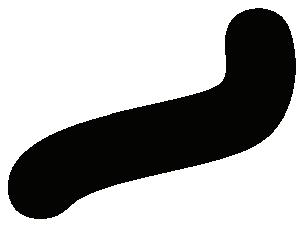


Wet or humid conditions promote fruit brown rot infections as the fruit “sugars up” just ahead of harvest. Fungicides, especially those with FRAC 3 materials (Tilt, Tebuzol, Quash, etc.) give the best control possible when sprayed ahead of infection. Good spray coverage is needed to protect fruit from infection, so higher spray volumes (e.g., 140 to 150 gallons/acre vs 70 to 100 gallons/acre) deliver the best control in UC trials. Adding 415 spray oil (1 to 2 gallons of oil/100 gallons water) helps cut the waxy coating on the fruit and allows better coverage. Every other row spraying doesn’t control disease on the far side of the tree from the sprayer.
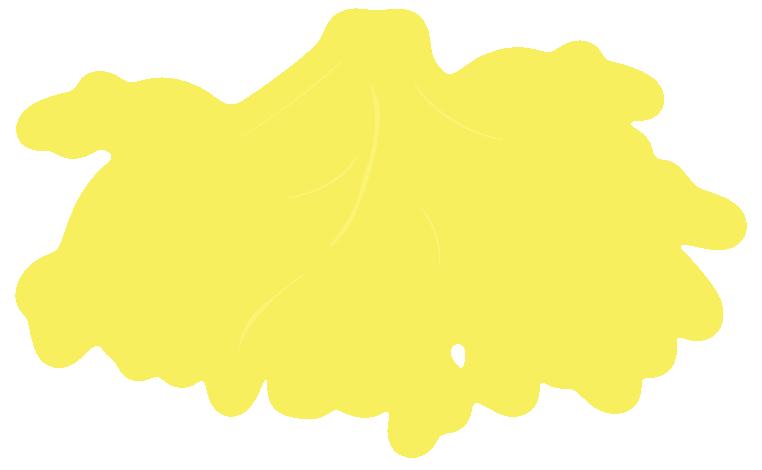
March / April 2024 www.progressivecrop.com 7
ContinuedonPage8
micronutrients to satisfy needs of customers seeking high zinc
micronutrients are completely chelated with natural organic acids,
readily bio-degradable and supply energy to the plant and soil
in
and
require other micronutrients for the growth of good crops. We Are Here to Help Call: 209.720.8040 Visit: WRTAG.COM
Zinc-Shotgun® is a fertilizer that focuses on
with manganese, iron and copper. The
amino acids, and carbohydrates that are
microflora. Many soils are low
zinc
also
Complete, organically complexed micronutrient package containing essential elements to improve plant health and growth.
complexed with plant based amino acids, organic acids, and complexed polysaccharides.
nutrients are readily absorbed by the plant for a faster response.
Mn Fe Zn Cu
Organically
The
Designed to be applied both by foliar application and fertigation practices and is also e ective when applied directly to the soil.
Bark cankers and wood rot diseases
The 900-pound gorilla in prune pest management is bark or wood disease(s). Prune trees can be killed outright by these diseases, suddenly or slowly depending on the pathogen. Many of these diseases do the most damage to stressed trees.
Bacterial canker (bac canker) is just that, a bacterial infection of tree bark which enters trees stressed by ring nematodes (usually), poor nitrogen nutrition and/or other stressors like soil hardpan. This disease is active in wet, cold weather. Activity dies down as temperatures warm in the spring. There is no effective control measure when the stressors listed are present. Bac canker often hits young trees two to five years old. Where ring nematode is found in ahead of planting, preplant fumigation is recommended but may not completely control the nematodes. The best approach for bac
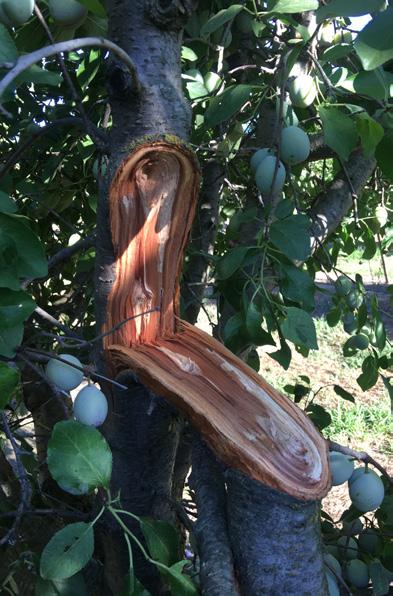
canker control is to use rootstocks more tolerant of ring nematode than the Mariannas (M2624, M29C, Myro root, etc.) What are those? In recent prune rootstock trials, 'Improved French' trees on Lovell or Viking rootstock had a higher survival percentage than the current industry standard rootstocks M2624 and M29C. In the same study, trees on Krymsk 86 rootstock also survived better than those on M2624 and M29C.
Fungal cankers are another major killer of prune trees. Cytospora (and other pathogen species such as Botrysphaeria and Phomopsis) enter prune trees though damaged bark such as sunburn, oil burn and/or pruning cuts. Practices to protect prune trees from infection include protecting trunk bark with white paint, leaving the interior of the tree “shaggy” to shade scaffold wood and/or spraying thiophanate-methyl (Topsin-M, etc.) fungicide on pruning cuts immediately after pruning. While other fungi-













































8 Progressive Crop Consultant March / April 2024
Heritage Crop Science, LLC ContinuedfromPage7
Wood rot weakens trees, and crop weight can break trees as a result.
cides may provide some protection of pruning wounds from canker pathogens, thiophanate-methyl most consistently controlled infections in UC trials.
Finally, wood rot fungi (Phellinus pomaceus, previously known as Phellinus tuberculosus) causes rapid and early decline of prune orchards. This slow-growing fungus is believed to enter trees through pruning wounds. Broken limbs and scaffolds generally begin to appear after 10th leaf, but infections are believed to occur years earlier. To maintain a productive orchard, pruning practices early in the life of the orchard should include thiophanate-methyl during dry weather to avoid infection. This might seem crazy, but not as much (or as painful) as a perfectly good prune
The major, unique pests of prunes are aphids and canker diseases as reviewed above. The UC IPM Pest Management Guidelines for prunes and plums are being revised this spring, so more information and resources (images, effective pesticides) will soon be available.
In the meantime, here’s to hoping the prune crop will set well this spring and orchardists in the Sacramento Valley will have decent crops across all acres.
References
Monitoring aphids ipm.ucanr.edu/agriculture/prune/ springsummer-monitoring-for-aphids/
Pyrethroids in surface water sacvalleyorchards.com/blog/com-
Prune disease references
ipm.ucanr.edu/agriculture/prune/ brown-rot-blossom-and-twig-blight/
ipm.ucanr.edu/agriculture/prune/russet-scab/
ipm.ucanr.edu/agriculture/prune/ brown-rot-on-fruit/
sacvalleyorchards.com/prunes/diseases-prunes/cytospora-signs-management/
sacvalleyorchards.com/prunes/diseases-prunes/update-on-heart-rot-inprunes/
https://www.growingthevalleypodcast. com/podcastfeed/phellinus


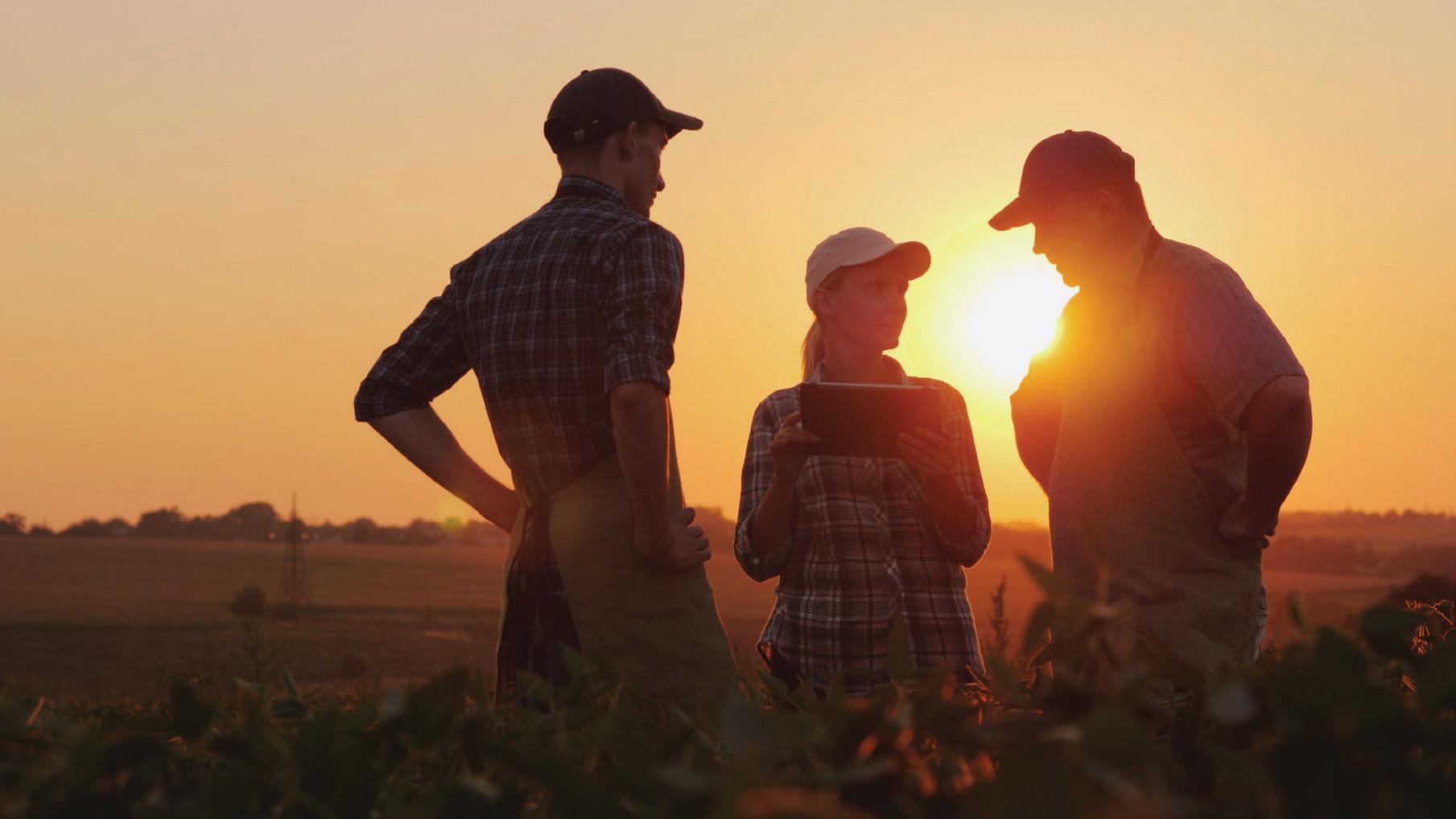

September 25th-26th, 2024 Register Early and Save Price increases on May 31st, 2024 Early-bird Pricing $300/person For more information or to register visit: HOSTED BY: CO- HOSTED BY: Visalia Convention Center 303 E Acequia Ave, Visalia, CA 93291
Carbon Footprint in Almond Orchards: A Reason to Care
By DEVIN CLARKE | PCA, CCA

Iknow what you’re thinking; another green-washed lecture from someone who has no understanding of farming practices and wants to tell you how to run your operation. I assure you this is not that type of op-ed.
The topic of this discussion is under-
standing the practical relevance of improving your almond production carbon footprint (“CFP”). We begin by defining CFP as a measure of CO2-equivalent pounds per unit of food produced, or pounds of almonds in this case. There are two critical components of that statement. The first is “CO2-equiv-
alent pounds.” This metric is used to harmonize units across industries that emit various types of greenhouse gas emissions. In almond production, as with other crop production systems, the primary greenhouse gas concern is N2O typically lost via crop nutrition management practices. The reason N2O is a primary concern is because each pound of N2O gas is equivalent to almost 300 pounds of CO2 . This equivalency is also why crop nutrition management (primarily nitrogen management) is typically the single largest contributing factor to total production emissions. However, it’s also the lowest-hanging fruit for CFP improvements. The second critical element is these values are expressed on a per-unit-of-food-produced basis. This allows for efficiency gains in our management strategies to be accounted for more appropriately.
California Senate Bills 253 and 261 were signed into law this past October. These bills define a requirement for entities conducting business in California that meet specific revenue thresholds to report on their greenhouse gas emissions beginning in 2026. Entities within thresholds will have to look upstream and downstream in their supply chains to accurately quantify their emissions, which means they’ll likely need some verification of production CFPs from farms that are supplying ingredients.
What Can Be Done Right Now
Nitrogen management
With an expectation of new levels of scrutiny in the future, it’s important to focus on the practical relevance of these emissions. In many ways, emissions can be related to the overall efficiency of farming practices to produce food as previously noted. For example, if you were able to produce 2500 kernel lbs/ac using 200 lbs of N fertilizer instead of 250 lbs, you will have reduced your CFP of production. A second example might be adding a berm blower to your spray
10 Progressive Crop Consultant March / April 2024
Nitrogen Use Efficiency (NUE), or the amount of N supplied versus the amount removed in the crop, is a key metric of crop nutrition management efficiency and improves the closer applications are matched to demand and the 4Rs of Nutrient Stewardship for delivery are leveraged (photo by Cecilia Parsons.)
rig so that you could make half as many passes through the orchard for preemergent sprays. These improvements enhance our overall efficiency and lower emissions. Ultimately, N and irrigation management are by far the most significant contributors and offer the greatest opportunities for CFP reductions by efficiency improvements.
N management and irrigation are intimately tied together as N is taken up by the crop via mass flow with water. This characteristic is helpful in that its movement in the soil profile is predictable. It can, however, be detrimental when we mismanage our irrigation applications. Nitrogen Use Efficiency (NUE),
we get to matching our applications to demand and leveraging the 4Rs of Nutrient Stewardship for delivery. Traditional practices of slugging on 200+ pounds N in four to five calendar-based applications typically reduce our NUE to around 60% to 70%. The environmental fate of 30% to 40% N applied in this manner is aboveground losses due to volatilization and below-rootzone losses from leaching. These losses are counted in a production carbon footprint. Even in a scenario where greenhouse gasses like N2O are not emitted but the product is leached below the rootzone, that
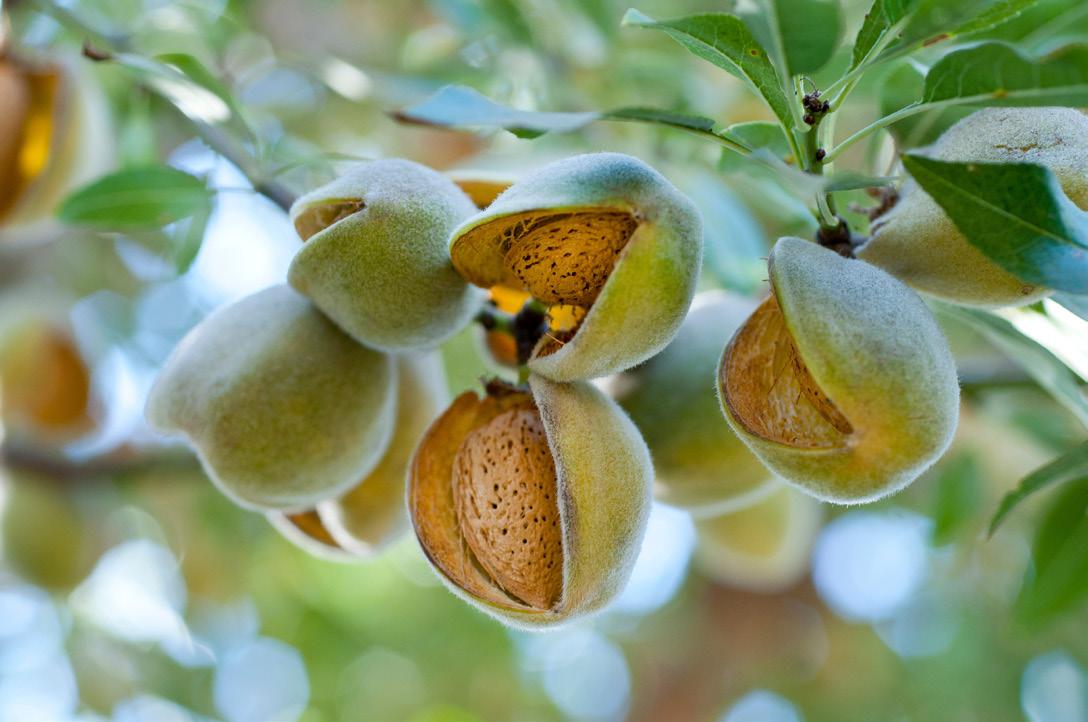
early June. This is an improvement in that they are getting closer to matching demand at each application though they are still operating by an arbitrary calendar and not applying to true demand. The ultimate management strategy for NUE optimization is matching demand with every irrigation by adopting season-long continuous fertigation.
Continuous fertigation has been well documented to achieve 90% or better NUE with proper execution. This is achieved by minimizing environmental losses. Consider the following example


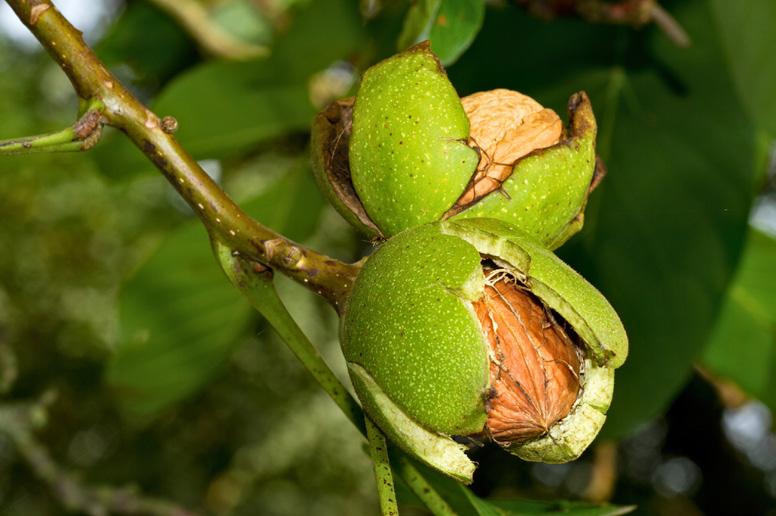
Bacterial Spot in Almonds Research Trials
CS 2005 + Manzate had 95% control of Bacterial Spot! Scan the QR Code for Full Report!

Walnut Blight Research Trials
CS 2005 had 94% - 100% control of Walnut Blight! Scan the QR Code for Full Report!

March / April 2024 www.progressivecrop.com 11
15 10 5 0 40 30 20 10 0
Our copper sulfate pentahydrate in-solution formula is OMRI-listed with systemic capabilities and has proven results combating disease in copper-resistant strains! It’s environmentally friendly by using less than an 1/8 lb per acre of metallic copper specifically designed to combat diseases in tree nuts including: Bacterial Blast, Bacterial Spot, Bacterial Canker, Blossom Brown Rot, Coryneum Blight in Almonds and Walnut Blight in Walnuts!
www.MagnaBon.com
CS 2005 + Manzate
CS 2005 Copper Hydroxide Control
Control
Dr. Jim Adaskaveg - UC Davis - Research Trials


ContinuedfromPage11
continuous fertigation strategy and from 70% to 90% efficiency. Those 242 N units can now support a 3200-lb crop. In this example, you’ve purchased and applied the same amount of N for a 2500-lb crop at 70% efficiency, but the management improvements support increased production by 700 lbs/ac, reduced CFP per unit of food produced (due to more crop with same N rate) and increased gross profit by over $1000/ac (using $1.5/lb crop price). The opportunity costs for NUE improvement are promising, even in a depressed market.
Crop nutrition management plays a critical role in improving NUE and
thus reducing CFP, but input selection is equally important. There are three common forms of N fertilizer, each with their own strengths and weaknesses. Urea contains CO2 , which can gas off immediately after application, ammonium can volatilize, and nitrates can denitrify under specific conditions. Selecting the right input source for the right conditions supports NUE improvements. There are also inherent manufacturing processes that influence the product CFP at the farm gate. Speak with a trusted CCA to learn more about these product-specific attributes.
Irrigation management
In a close second to nitrogen management, irrigation management accounts
for about 1/3 of the total production CFP and can be maximized by irrigating in smaller doses more frequently. Water management improvements can, in many cases, lead to less total water applied per pound of kernel weight and less relative pumping time, which reduces your CFP due to fewer engine-related emissions. Optimizing irrigation efficiency and crop nutrition delivery also relies on distribution uniformity (DU). System tests should be conducted periodically because poor DU will result in overapplication of water and nutrients in some areas of the field while other areas suffer due to inadequate resources. While this all sounds good on paper, there is one of fundamental hurdle for adoption of continuous ferti-
12 Progressive Crop Consultant March / April 2024
Tools like CoolFarm Tool and Comet Planner con help growers take inventory of emissions related to various farm management activities.

gation and irrigations strategies, which is the availability of water. Those that have productive wells with good-quality water are best positioned to achieve these goals as they can apply water as needed to support their efficiency goals. Those that are beholden to district water delivery schedules don’t have quite the same opportunity to feed water and nutrients in this fashion.
Remember: It is when we look at CFP as energy and resources used that did not support yield improvements that we are able to connect it back to production efficiency.
To begin assessing your operations, there are tools like CoolFarm Tool and Comet Planner to help you take inventory of your emissions related to various farm management activities. There is, however, no one-size-fits-all methodology to make improvements; strategies should be rooted in sound agronomy based on site-specific conditions to achieve the maximum benefit. Ultimately, don’t be afraid to ask questions or start taking inventory of your emissions as it will likely provide insights to your most costly farming activities in terms of energy and resources and guide you toward a more profitable future.
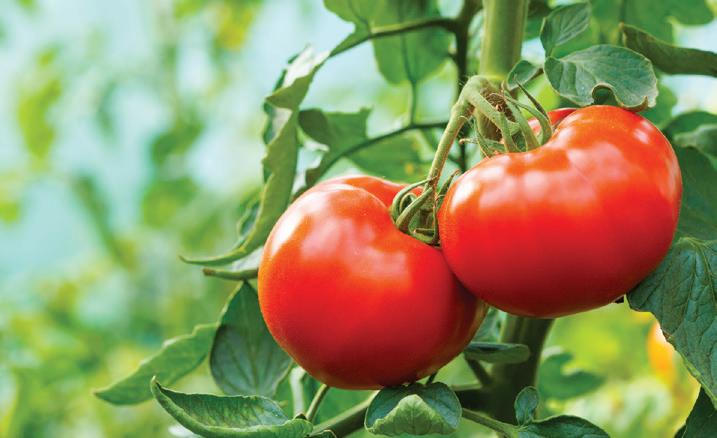
Comments about this article? We want to hear from you. Feel free to email us at article@jcsmarketinginc.com
March / April 2024 www.progressivecrop.com 13
AVAILABLE NOW New Enhanced Formulation to Maximize N and Ca Efficiency Yara North America, Inc. • 1-800-234-9376 • www.yara.us YaraTera® NITRAKAL™ MAX Scan here to learn more 2-YaraTera-Nitrakal-4.75x7.5-ad-0723-R3.indd 1 7/13/23 4:16 PM
Irrigation management accounts for about one-third of the total almond production carbon footprint and can be maximized by irrigating in smaller doses more frequently (photo by Curt Pierce, UCCE.)


Irrigation and Nitrogen Management Plans Supporting Growers in Meeting Reporting Requirements
By NICOLE NUNES | CCA, Environmental Scientist, CDFA Fertilizer Research and Education Program
As water quality regulations intensify for California growers, the industry has drawn attention to crop consultants as a source of trusted knowledge and advice. Rigorous certifications, such as the Western Region Certified Crop Adviser (WRCCA), ensure the most qualified agricultural professionals are available to support growers in improving their farming operations through efficient practices and resource use. Because of their comprehensive knowledge in soil, water and nutrient management, crop consultants have been asked to play a role in helping California growers meet requirements of the Irrigated Lands Regulatory Program (ILRP).
Precedential Water Quality Requirements for Growers
ILRP regulates discharges such as nitrate from irrigated agriculture to protect surface and groundwater quality. ILRP covers over 6 million acres of irrigated lands in growing regions across California. Due to the diversity in production systems and water quality impairments across the State, regulations are generally handled on a regional basis. However, some reporting requirements set by the
State Water Resources Control Board (SWRCB) serve as precedential requirements across all regions.
In 2018, SWRCB amended the waste discharge requirements for the East San Joaquin River Watershed. This ruling is referred to as the Eastern San Joaquin (ESJ) Order. SWRCB designated portions of the ESJ Order as precedential and directed the Regional Water Boards to revise their programs to be consistent with the precedential requirements. So far, almost all Regional Water Boards have updated their regulatory language to reflect the precedential requirements.
The precedential regulations include the requirement for all growers to complete Irrigation and Nitrogen Management Plans (INMP) and submit summary data to a third-party coalition or the Regional Water Board.
INMP reporting requirements serve two main purposes: The first is to help growers project the total amount of N a given crop will require over the season. Such planning can increase application efficiency and reduce the loss of N to
surface and groundwater. Second, the data made available through the summary reports enable third-party coalitions to analyze the range of N application rates for each crop in the region. This allows the coalitions to identify any parcels that may be outliers and implement follow-up action to help reduce overapplication.
Role of Crop Consultants
The precedential requirements have increased the need for agricultural professionals trained in irrigation and nutrient management practices and technologies. CCAs have been identified to fill this need along with certified professional soil scientists, agronomists and agriculture irrigation specialists. Being familiar with the precedential requirements and completing INMP worksheets and summary reports adds value to your professional toolkit.
Additionally, growers in your region may be required to have INMPs certified by a specialist in irrigation and N management. The Regional Water Boards have discretion on requiring if all growers’ INMPs must be certified, or just a subset of growers, based on a risk categorization
14 Progressive Crop Consultant March / April 2024
Because of their comprehensive knowledge in soil, water and nutrient management, crop consultants have been asked to play a role in helping California growers meet requirements of the Irrigated Lands Regulatory Program (photo by Vicky Boyd.)
such as the low/high vulnerability area distinction. Currently, the Central Valley and Los Angeles Regional Boards require certification of plans for parcels located in high vulnerability areas.
To certify INMPs for growers in these regions, you must hold one of the following certifications:
• CCA with California Nitrogen Management Specialty
• Certified Professional Soil Scientist
• Certified Professional Agronomist
• Certified Agricultural Irrigation Management Specialist
By signing off on a grower’s INMP, you are certifying the INMP was prepared under your direction and supervision and that the data reported is, to the best of your knowledge, accurate and complete. Additionally, you are certifying that you used sound irrigation and N management planning practices to develop your recommendations and that the recommendations are informed by applicable agronomic training.
As a certifier, you are not responsible for any damages, loss or liability arising from subsequent implementation of the INMP by the grower in a manner inconsistent with INMP’s recommendations. The certification does not create any liability or claims for environmental violations.
Nitrogen Management Course and Specialty Certification for Crop Consultants
There are several trainings and resources available to crop consultants that cover the information needed to prepare a detailed and accurate INMP including the University of California’s Nitrogen Management Training for Crop Consultants.
The self-paced course covers N and irrigation management practices that reduce environmental impacts while maintaining crop productivity. Participants receive access to online videos covering a variety of topics, including N cycling, sources, budgeting, dynamics in California cropping systems, the environmental impacts of N loss, irrigation management and barriers to adoption of environmental practices.
The course offers 10 hours of CCA continuing education credits. While the course is designed for CCAs, anyone interested in learning more about N and irrigation management in California agriculture is welcome to participate. The course is open for enrollment through May 31, 2024 at https://ucanr.edu/sites/ nitrogencourse/
The course was created to provide CCAs with the specialized training and education necessary to obtain the California Nitrogen Management Specialty Certification (CA-NSp). The CANSp is for California-based CCAs who provide N management planning services to their clients and are interested in certifying INMPs. CCAs must pass the exam to obtain the specialty certification. After passing the exam, specialists must maintain their certification by meeting the continuing education requirements set by the CCA Program.
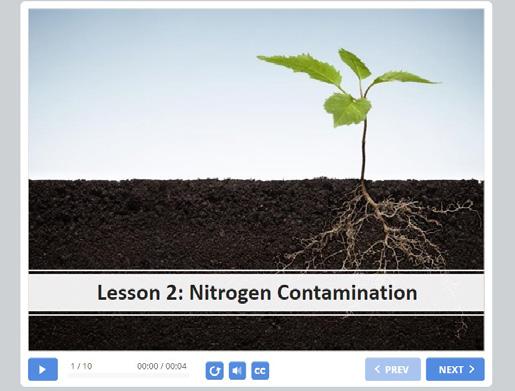
There are several trainings and resources available to crop consultants that cover the information needed to prepare a detailed and accurate INMP including the University of California’s Nitrogen Management Training for Crop Consultants.
Individuals that participated in CDFA’s Nitrogen Management Training for CCAs prior to Oct. 1, 2020 were automatically awarded the specialty certification.
CDFA Irrigation and Nitrogen Management Training Program
CDFA’s FREP also offers a training that covers the basics of irrigation and N management and provides step-by-step instructions in completing INMP worksheets and summary reports.
The self-paced course and accompanying workbook were designed for growers required to complete INMPs and interested in self-certification. However, the training workbook is also available to crop consultants developing and certifying plans for growers. The digital workbook covers all the information provided in the training and includes exercises and additional resources (https://www.cdfa.ca.gov/is/ffldrs/frep/training.html).
Supporting Growers into the Future
As regulatory pressure increases, the demand for trained professionals will continue to rise. Taking part in a certification program like WRCCA helps demonstrate to growers that you have the knowledge and experience to provide sound advice in irrigation and nutrient management practices that will help them meet regulatory requirements. As crop consultants, it is important to stay up to date on the latest research and technology so we can support growers as they face the challenges of balancing profitability with environmental stewardship.
CDFA’s FREP provides funding for research, education and outreach projects focused on advancing agricultural nutrient and irrigation management practices. To receive updates on current and completed projects, FREP’s grant cycle and relevant irrigation and nutrient management events, subscribe to the FREP newsletter at www.cdfa.ca.gov/subscriptions/
Comments about this article? We want to hear from you. Feel free to email us at article@jcsmarketinginc.com
March / April 2024 www.progressivecrop.com 15
Pre-Bloom Foliar Boron Application on Olive May Improve Yield
By ELLIE ANDREWS | Ph.D., UCCE Farm Advisor, Sonoma County
and ELIZABETH FICHTNER | Ph.D., UCCE Farm Advisor, Tulare County

Olive orchards entering an ‘off’ year in 2024 may benefit from pre-bloom foliar boron applications to support reproduction and yield. Because the 2023 California olive crop varied widely both within and between olive-growing regions, the value of B applications should be considered at the individual orchard level. For example, in the southern San Joaquin Valley, the 2023 ‘Manzanillo’ table olive crop was off due to the high temperatures at bloom whereas many oil cultivars in the region were unaffected by the heat and had heavy production. Those orchards that had a heavy ‘on’ crop in 2023 may benefit from pre-bloom B application in the 2024 season.
B is an essential micronutrient for plant growth and reproduction. B deficiency affects plant reproduction by reducing pollen viability and germination and limiting pollen tube growth. Deficiency also limits the proportion of flowers that set fruit and reduces the retention of developing fruit. The influence of B deficiency on multiple stages of reproduction may negatively impact yield. B also plays a role in vegetative growth and metabolism, ensuring cell wall and membrane integrity and facilitating sugar transport and cell division. Because it plays a crucial role in reproduction, B is translocated from vegetative tissues to reproductive tissues, resulting in higher concentrations of the nutrient in reproductive organs than leaves. Due to this high demand, reproductive B deficiency can occur even when vegetative B and available soil B are sufficient.
Benefits of Boron
Studies conducted across numerous global olive-growing regions demon-
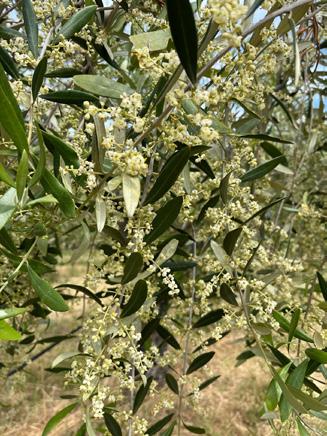
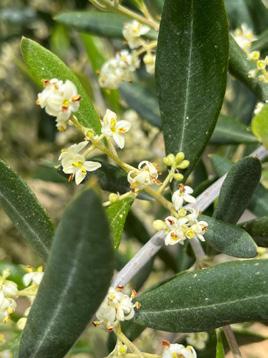
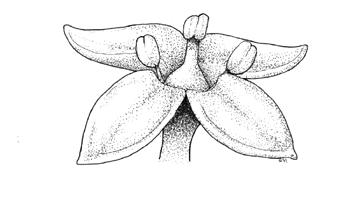
strate the beneficial effects of foliar B application on yield, particularly in advance of an off crop. The influence of B application on productivity in olive orchards may relate to increases in photosynthesis, an increase in the number of perfect flowers (those with both male and female reproductive parts) (Figure 1) and an increase in pollen viability, or pollen tube growth. Olives are considered andromonoecious, a reproductive strategy in which plants bear both hermaphroditic (perfect) flowers and male flowers. Stress prior to bloom may cause pistil abscission in a fraction of buds resulting in a higher percentage of male flowers. Several research studies have demonstrated prebloom foliar B application can increase the percent of perfect flowers on trees, thus increasing the number of flowers
capable of producing fruit. In olive, B is readily mobilized from both young and old vegetative growth to support flower and fruit production; therefore, a portion of B applied throughout the year may be utilized to support reproductive processes. During the pre-bloom season, however, cool temperatures and the corresponding reduced physiological activity may limit the uptake and translocation of B in olive. Additionally, flowers are not as strong a B sink as fruit; therefore, the pre-bloom foliar application may render the micronutrient available at a short-lived yet critical time in crop development.
Both oil olives and ‘Manzanillo’ table olives have been shown to benefit from foliar B applications. For example, ‘Arbequina’ receiving pre-bloom foliar ap-
16 Progressive Crop Consultant March / April 2024
A B C
Figure 1. Olives produce numerous small flowers (A) on panicles (B). Each panicle contains 12-20 flowers (B). Perfect flowers contain two anthers and a pistil in the center (C). Photos: E. Andrews. Illustration: S. Hishinuma.
Figure 1. Olives produce numerous small flowers (a) on panicles (b). Each panicle contains 12 to 20 flowers (b). Perfect flowers contain two anthers and a pistil in the center (c) (photos by E. Andrews, illustration by S. Hishinuma.)

plication of B exhibited increased bloom and a 27% increase in yield in an off year. In the ‘Arbequina’ study, no value of B was observed in an on year, and B was found to have no effect on vegetative growth. In another study, B applications to ‘Frantoio’ resulted in increased concentration of chlorophyll and soluble sugars as well as changes in the profile of endogenous plant growth regulators within the leaves. In California, prebloom B applications on ‘Manzanillo’ resulted in increased percentage of perfect flowers and improved fruit set and yield, particularly during an off year.
Recommended Application
The recommended foliar B concentration for olives ranges from 19 to 150 ppm. Values below 14 ppm B may result in B deficiency, whereas values above 185 ppm may result in B toxicity. A foliar nutrient analysis only provides a snapshot of the status of the plant at the time of leaf collection; however, low B status of leaves has been found to correlate well with symptoms of deficiency. Symptoms of B deficiency in olive include dead leaf tips with a characteristic yellow band and green leaf base as well as twig and limb dieback (Figure 2). B deficiency may first become apparent in the meristems, the growing tips of shoots. B deficiency may also result in misshapen and defective fruit (Figure 2), low fruit set and premature fruit drop. The value of B application for improved fruit set is not limited to orchards with visual symptoms of B deficiency or foliar B levels below the recommended range. In fact, the numerous research studies that demonstrate the value of




March / April 2024 www.progressivecrop.com 17
ContinuedonPage18 W S H GTONSTATEDEPARTMEN OFA R C RU ORGAN C ROGRAM REGISTERED INPU MATERIAL (760) 599-8855 • www.san-agrow.com SAN Agrow offers effective plant nutrients, biopesticides and specialty inputs designed to optimize crop production. Contact us today to learn more! SOLUTIONS FOR SUSTAINABLE CROP HEALTH AND NUTRITION
pre-bloom foliar B applications for enhanced fruit set and yield were conducted in orchards with no B deficiency. Based on these findings, foliar analysis alone may not be a useful predictor of benefits from pre-bloom foliar B application.
B is typically introduced to orchards either as a solid mineral broadcast on the soil surface, or in solution as a foliar spray. The pre-bloom foliar application is designed to specifically enhance fruit set and yield and should be applied three weeks prior to bloom. B is generally sold as borax, sodium borate, sodium tetraborate, boric acid, or Solubor® (Table 1). The B content varies between formulations; therefore, all calculations should be based on the equivalents of active ingredient (i.e., pounds of B). For example, for soil-applied B in olive, 5 to 10 lbs/acre B is broadcast, which equates to approximately 45 to 49 lbs/
acre borax (11% B) or 24 to 48 lbs/acre Solubor® (20.5% B). In California, foliar application of B three weeks prior to ‘Manzanillo’ bloom, particularly in off years, at rates of 1 or 2 lb./acre Solubor®
in a 100 gallon/acre (246 or 491 mg/L B at 935 L/hectare) was demonstrated to improve yield by approximately 30%. The baseline B level in this California study site was 16 ppm B, a level just
18 Progressive Crop Consultant March / April 2024
Contact us to see how we can help! (559)584-7695 or visit us as www.superiorsoil.com Serving California since 1983
Common Name(s) Compound Name Chemical Formula Boron Content Solubor® Disodium octaborate tetrahydrate Na2B8O13 ·4H2O 20.5 % Boric Acid Boric Acid H3BO3 17.5 % Borax Disodium tetraborate tetrahydrate Na2B4O7 · 10H2O 11.3 % Sodium borate Disodium borate pentahydrate Na2B4O7 · 5H2O 20 % ContinuedfromPage17
Table 1. Common fertilizer sources of boron
Table 1. Common fertilizer sources of boron.

below the established critical level, but high enough to avoid deficiency symptoms.
The value of B applications on orchard health and economic return varies based on the status of the alternate bearing cycle in the year of application, the baseline B status of the tree and soil,

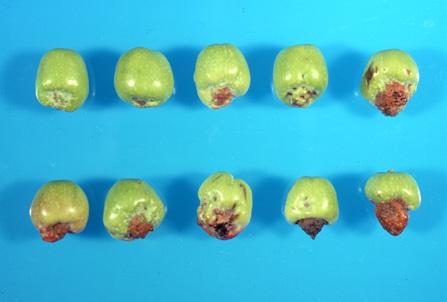
and other climate factors that may influence yield. Plants have a narrow range between B deficiency and toxicity. Be sure to read the product label carefully to avoid over-application and conduct annual leaf tissue analyses to gather baseline information on the B status of orchards. More information on fertilizer rates for olives and other California

crops may be found on the CDFA FREP California Crop Fertilization Guidelines website at cdfa.ca.gov/is/ffldrs/frep/FertilizationGuidelines/.
Comments about this article? We want to hear from you. Feel free to email us at article@jcsmarketinginc.com



March / April 2024 www.progressivecrop.com 19
A B
Figure 2. Symptoms of boron deficiency in olive include dead leaf tips with a characteristic yellow band and a green
B
Figure 2. Symptoms of boron deficiency in olive include dead leaf tips with a characteristic yellow band and a green leaf base (A) and misshapen fruit (B). Photos: J. Connell.
Figure 2. Symptoms of boron deficiency in olive include dead leaf tips with a characteristic yellow band and a green leaf base (a) and misshapen fruit (b) (photos courtesy J. Connell.)
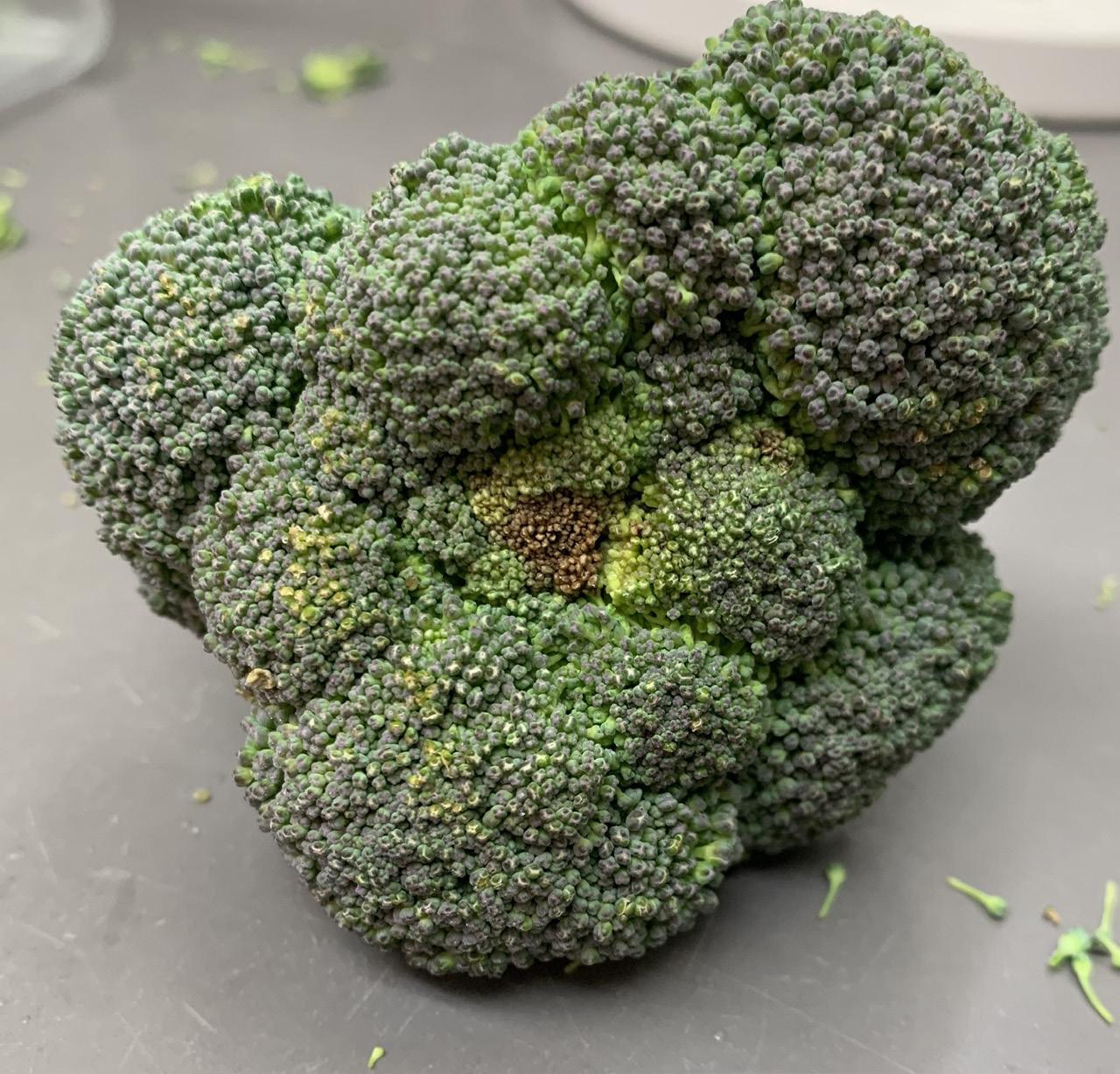
Research Update on Broccoli Alternaria Head Rot Management
By YU-CHEN WANG | UCCE Plant Pathology Advisor, Santa Cruz, Monterey and San Benito Counties
20 Progressive Crop Consultant March / April 2024
Figure 1. Head rot symptoms start as yellow spots and then turn brown and black (all photos courtesy Y. Wang.)

X-Cyte™ is a CDPR-approved product containing cytokinin and formulated to mitigate abiotic stress for maximum almond yield. Studies conducted over the last five years reported a significant yield increase when using X-Cyte™ compared to the grower standard practices.

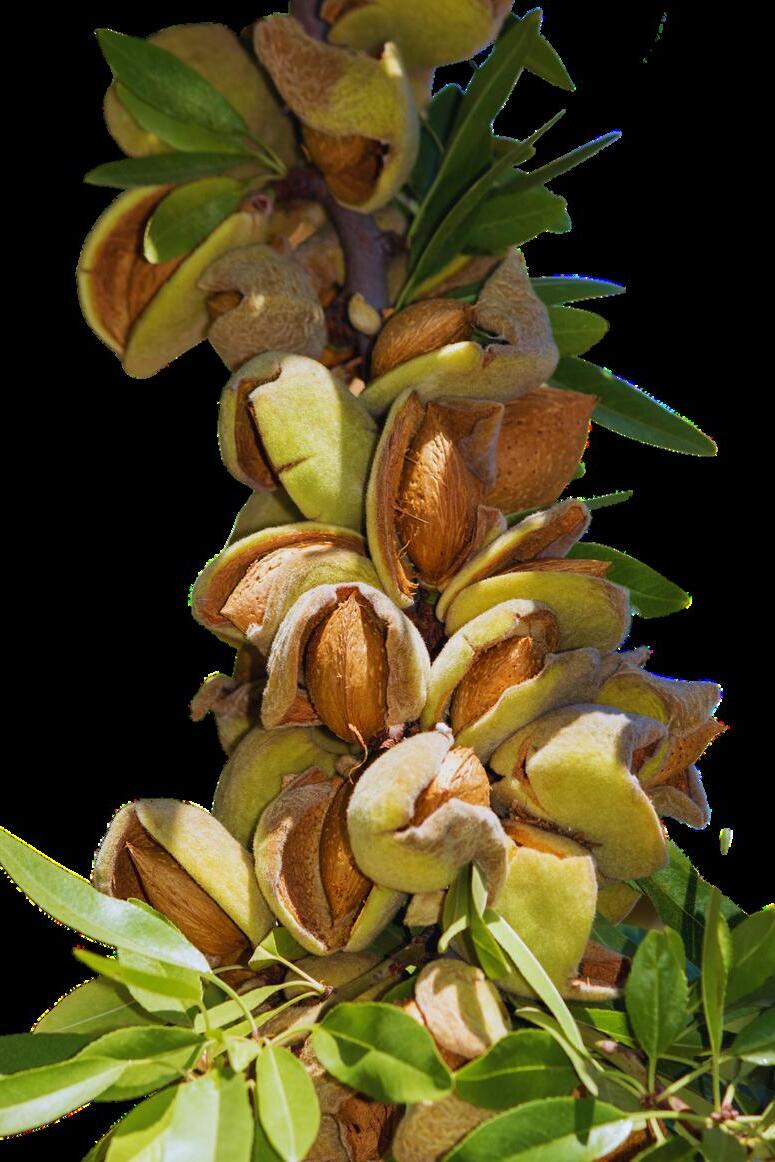

Westley Selma 5,000 4 000 3,000 2,000 1 000 0 269.6 lbs/A average y 16 fl oz/ (total of fiv It's Time to Get X-Cyted! A Corteva Agriscience Business
X-Cyte™ your almonds for higher yield. Scan the QR code to learn more L B S N U T / A Marketable Yield per Acre 2018 2019 2019 2020 2022 2 , 4 2 8 0 2 , 6 8 4 2 2 , 3 7 6 2 2 , 5 5 2 2 2 , 0 4 5 3 2 , 2 5 5 7 3 , 8 1 8 7 4 2 0 6 5 2 , 5 0 2 8 2 , 8 7 4 5 1 , 3 9 0 7 1 , 5 9 1 5 2021 2021 2 , 8 7 8 7 3 , 1 6 2 8 Grower Standard Practices 16 fl oz X-Cyte™ + Grower Standard Practices


ContinuedfromPage21
perature, poor growth or nutrient and water deficiency. However, the brown bead doesn’t rot the stem, and no sign of fungi is presented on the buds. For uncertain cases, scraping the buds to see if the stem rot or fungi are presented is a useful technique. Leaf spot symptoms start as small yellow spots on the old leaves and then form dark, concentrical rings like a target (Figure 4). The old spots may become brittle and split open or fall out as shot holes. The high number of leaf spots per plant indicates a higher disease pressure and could be a signal for fungicide application.
Management Options
The disease is favored by prolonged wetness from rain, dew and fog. The wetness, a thin layer of water, is required for fungal spore germination. In addition, fungal spores are spread by winds and splashing water. Cultural practices to promote leaf drying or prevent leaf wetness may reduce disease severity. Some growers have seen the benefits of using drip irrigation instead of overhead irrigation to avoid wetting the foliage. An early harvest before rainfall could also reduce disease risk. Variety effects on disease tolerance play a role. Lumpy broccoli heads tend to accumulate water which may further weaken the plant tissues and become a suitable target for the pathogens. Finally, there are a number of
22 Progressive Crop Consultant March / April 2024
Figure 3. Brown bead, a broccoli disorder.
'ALL ABOVEGROUND PARTS OF BROCCOLI ARE SUBJECT TO INFECTION INCLUDING HEADS AND LEAVES.'
fungicides that have activity against the disease. Preventative fungicide applications should be considered for wet weather that is favored by the disease.
Research Update: Fungicide Evaluation
This study was conducted to evaluate some new and common fungicides in fall broccoli to support the growers and ag industry.
One fungicide trial was conducted in a commercial broccoli field to test the efficacy of select fungicides for controlling broccoli head rot in fall 2023. Broccoli ‘Centennial’ was direct-seeded on July 27, 2023. Seven fungicide treatments

PREVENTION THEY SAY AN OUNCE
OF IS WORTH A POUND OF CURE



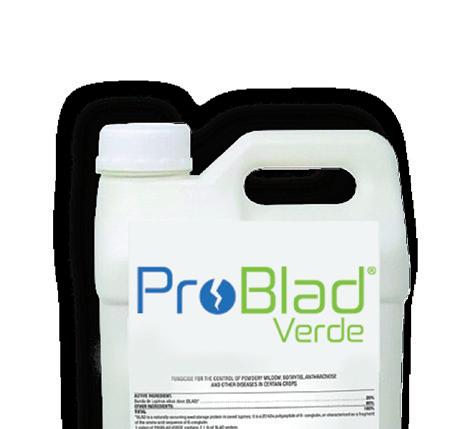
March / April 2024 www.progressivecrop.com 23
WE SAY
your
management
give your
your profit potential. FLEXIBLE APPLICATION LOCALLY SYSTEMIC CURATIVE & PREVENTATIVE UP TO 7–14 DAYS PROTECTION ContinuedonPage24
Transform
approach to disease
with ProBlad® Verde fungicide and
vines and berries what they deserve – elevated disease protection and enhanced grape quality – all while maximizing
Figure 4. Leaf spot symptoms start as small yellow spots on the old leaves and then form dark, concentrical rings like a target.
‘PREVENTATIVE FUNGICIDE APPLICATIONS SHOULD BE CONSIDERED FOR WET WEATHER THAT IS FAVORED BY THE DISEASE’
ContinuedfromPage23
and a nontreated control were arranged in a randomized complete block design with four replications. Each plot consisted of two seedlines of broccoli 30-ft long on 40-inch-wide beds. On each side of the plot was a nontreated guard bed. Treatments were applied with a CO2-pressurized backpack sprayer calibrated to deliver 35 gpa at 30 psi using double TeeJet 8004E flat fan nozzles. Fungicide applications were made on October 4 and October 16. All treatments were applied with non-ionic surfactant Dyne-Amic 0.08% v/v. Alternaria head rot incidence was evaluated at harvest on October 23. Disease incidence was expressed as the percentage of the number of plants with Alternaria head rot in the total number of plants within the middle 15 ft of the plot. Data were analyzed using analysis of variance (ANOVA) and the Tukey test to separate means at P<0.05. The total rainfall received one month before harvest was 0.57 inches. The average, minimum and maximum temperatures were 62 degrees F, 53 degrees F and 75 degrees F, respectively.
The disease pressure in this trial area
zProduct and R ate/A in this trial: Boscalid (Endura 9 oz), Penthiopyrad (Fontelis 30 fl oz), P ydiflumetofen+ Fludioxonil (Miravis Prime 11.4 oz), Azoxystrobin (Quadris 15.5 fl oz), Fluxapyroxad + P yraclostrobin (Priaxor 8.2 fl oz), Fluopyram+ Trifloxystrobin (Luna Sensation 7.6 fl oz), P yraclostrobin (Cabrio 16 oz)
xNumbers in a column followed by the same letter are not significantly different based on Tukey’s significant difference test (P<0.05)
yFR AC: Fungicide Resistance Action Committee.
was low with nontreated control having 14.0% head rot (Table 1). However, significant differences occurred among treatments for the % Alternaria head rot. All treatments reduced % Alternaria head rot numerically, while Pydiflumetofen+Fludioxonil, Azoxystrobin, Fluxapyroxad+Pyraclostrobin, Fluopyram+Trifloxystrobin and Pyraclostrobin had significantly lower % Alternaria head rot than nontreated control. And they had statistically similar % Alternaria head rot. These results also showed single FRAC 11, premixes with FRAC 7 and 11, and premixes with FRAC 7 and 12 provided good control of Alternaria head rot. Single FRAC 7 provided fair control of Alternaria head rot.
Thanks to the cooperating growers and PCAs for assisting the trial. Thanks to agrochemical companies for funding and the technical assistance from Carlos Rodriguez.
References
Koike, S. T. 2010. Looking ahead: head rot can be issue for winter and early spring broccoli. Salinas Valley Agriculture blog. https://ucanr.edu/blogs/blogcore/postdetail.cfm?postnum=3861
Comments about this article? We want to hear from you. Feel free to email us at article@jcsmarketinginc.com
24 Progressive Crop Consultant March / April 2024
Active ingredientz FRACy group Alternar ia head rot (%/pl ot) Nontreated 14.0 ax Boscalid 70% 7 9.3 ab Penthiopyrad 20.4% 7 8.8 ab P ydiflumetofen 12.8% Fludioxonil 21.4% 7, 12 2.3 b Azoxystrobin 22.9% 11 1.5 b Fluxapyroxad 14.3 3% P yraclostrobin 28.58% 7, 11 0.8 b Fluopyram 21.4% Trifloxystrobin 21.4% 7, 11 0.8 b P yraclostrobin 20% 11 0.0 b P-value 0.0005
5 MODES OF ACTION. PROVEN TO PREVENT OR TREAT 90 FUNGAL AND BACTERIAL DISEASES. 700+ LAB AND FIELD TRIALS. ACROSS 74 CROPS AND ORNAMENTALS.

Double Nickel biofungicide has the numbers to prove it’s a smart choice for your IPM program. Learn more about how this effective, broad-spectrum fungicide can protect your crops in the orchard, greenhouse or field.
VISIT YOUR RETAILER OR CERTISBIO.COM/DOUBLE-NICKLE TO LEARN MORE.
©Certis USA LLC. All Rights Reserved. Double Nickel is a trademark of Certis USA. THE NUMBERS DON’T LIE.
Wet Years Can Lead to Aerial Phytophthora Outbreaks in Almond Orchards
By FLORENT TROUILLAS | Associate
Professor of Cooperative Extension, Department of Plant Pathology, UC Davis, ALEJANDRO
HERNANDEZ |
Graduate Student, Department of Plant Pathology, UC Davis and
JIM ADASKAVEG
| Professor of Plant Pathology, Department of Microbiology and Plant Pathology, UC Riverside
The relentless storms of 2023 set new precipitation records for California and caused widespread local flooding. “Atmospheric rivers,” or major rainstorms, between December and March and the mild temperatures that extended into spring and summer created optimal conditions that led to an unprecedented outbreak of aerial Phytophthora caused by Phytophthora syringae. Almond orchards with severe outbreaks showed numerous trees with branch dieback and cankers with profuse gumming in the upper scaffold branches of the tree. Infection commonly initiated on lateral shoots and progressed into major limbs or scaffold branches where the abundant gumming was produced. The disease was detected as early as mid-February in Fresno County and reported statewide by early summer 2023.
Almond growers should be prepared to respond to the possibility of a recurring outbreak of aerial Phytophthora. This article provides insights about the disease symptoms, the pathogen biology, as well as some management guidelines for this relatively rare but serious disease of almond.
Phytophthora syringae has been associated traditionally with aerial Phytophthora cankers in almond, also known as Phytophthora pruning wound cankers (PPWC). PPWC is characterized by
cankers and profuse gumming developing at pruning wounds on branches. The disease has been recorded sporadically during wet years in almond orchards in California and can severely damage an orchard when conditions are favorable.
Early reports of PPWC date back to 1982 when the disease affected almond orchards throughout the Central Valley of California (Bostock and Doster 1985). PPWC was also commonly observed in the late 1990s and early 2000s (Greg Browne, personnel communication). High incidence of the disease generally has been correlated with heavy rainfalls typical of El Niño years such as 198283 and 1997-98 in California. The 2023 outbreak of aerial Phytophthora, which followed atmospheric river events, indicated inoculum of P. syringae remains abundantly present in almond orchards in California and that periodic disease outbreaks can occur when conditions are favorable. This recent outbreak also indicated the ability of this pathogen to attack young shoots of almond trees in the absence of pruning wounds. This aspect of the disease biology represents new findings for California, and a detailed description of the various symptoms associated with P. syringae is provided.
Aside from almonds, pruning wound cankers caused by P. syringae have been

reported on apricots and French prunes in California (Doster and Bostock 1988d). The pathogen is also known to cause crown and collar rot of several stone fruit (including almond) and is a major cause of citrus brown rot of fruit in California (Adaskaveg et al. 2014). Aerial fruit rot of peaches and apple caused by P. syringae have been reported in Italy and England, respectively.
26 Progressive Crop Consultant March / April 2024
Figure 1. Canker caused by Phytophthora syringae at a pruning wound. Infection shows profuse gumming near the canker (photo by A. Hernandez.)

This recent outbreak also indicated the ability of [Phytophthora syringae] to attack young shoots of almond trees in the absence of pruning wounds. This aspect of the disease biology represents new findings for California...’
Disease Symptoms
Aerial Phytophthora cankers associated with P. syringae have been usually associated with pruning cuts (Figure 1) including thinning cuts made during
the fall, winter or early spring. In 2023, shoot infections in the absence of pruning wounds were particularly common in almond orchards.
Early shoot infection causes dieback and moderate gumming (Figure 2) occurs from underlying necrotic tissues.

A unique Bacillus strain with multiple modes of action & broad spectrum control.
A fungal & bacterial disease management tool that promotes plant health & immunity.
A
March / April 2024 www.progressivecrop.com 27
&
Do not spray while bees are foraging. PREVENT DISEASE WITH MULTIPLE MODES OF ACTION Merivon® 130 135 140 145 150 165 170 175 155 160 180 Diseased Flowers/1 Min. Search A B TREA MENTS C 2/17/202 2/24/202 3/2/2021 Pink Bud Full Bloom Early PF BIOFUNGICIDES FOR ALMONDS 12% Decrease in Brown Rot Blossom Blight (Monilinia sp.) with Regalia vs. Merivon Alone • Eurofins, Sanger, CA, 2021 Untreated Merivon® 6.5 fl. oz. A BC Regalia® 1 qt./A A | Merivon® 6.5 fl. oz. A BC Stargus® 1 qt./A + Jet-Ag® 5% @ 1% v/v A | Merivon® 6.5 fl. oz. A BC IMPROVE BLOOM SPRAYS ©2024 Pro Farm Group, Inc. All rights reserved. ContinuedonPage28
fungicide & bactericide with industry-leading stability
robust label.
Figure 2. Early sign of gumming and shoot infection by Phytophthora syringae (photos by A. Hernandez and J. Adaskaveg.)
’
Eventually, shoots dieback, and the disease progresses into larger branches, with new infections developing at the junction between a branch and the dead shoot. A canker is then formed, and additional gumming is produced (Figure 3). Gum balls in branches vary in color from bright amber to gold, and reddish-brown to burgundy red (Figure 4). The unique gumming appearance associated with P. syringae infections is a distinguishing feature that can help with field diagnosis of the disease. In branches, cankers generally expand quickly from an infection site (pruning wounds or shoot junction), extending to more than 6 inches within three weeks of infection. Length of cankers in branches can reach up to 16 inches or longer. Removal of the outer bark reveals distinct concentric canker margins of alternating light-brown to brown tissue (Figure 5). Infections are generally restricted to the cambium tissue and do not cause internal wood discoloration as seen with some fungal cankers. Dieback of branches can be observed in orchards; however, trees typically do not die due to infections with P. syringae. During the 2023 outbreak, disease incidence (number of trees affected) in orchards varied from 10% to 75%, although severity may differ between different sections of an orchard. Susceptible cultivars include Nonpareil, Shasta, Aldrich, Monterey and Bennett-Hickman.
PPWC and the aerial Phytophthora are not to be confused with the Perennial Phytophthora Canker disease of almond, primarily caused by P. cactorum and P. citricola. Both diseases can cause aerial infections of almond trees, however P. syringae infections are annual, nonlethal to entire trees and associated with pruning wounds or young shoots. In contrast, perennial Phytophthora cankers are typically year-round, lethal to trees, and associated with water holding pockets and cracks at the tree crotch. Additionally, cankers caused by P. syringae can easily be mistaken for common fungal canker diseases affecting almond trees, such as Ceratocystis canker


caused by Ceratocystis destructans and band canker caused by Botryosphaeriaceae fungi.
Phytophthora Species Biology
Phytophthora species were once considered fungi but are now classified in a separate kingdom, the Stramenopila, in the phylum Oomycota. Phytophthora species are soil-inhabiting plant pathogens that thrive under wet environmental conditions, hence the common name of “water molds” is often used to describe these organisms. Diseases caused by Phytophthora pathogens result in devastating losses to agriculture crops and native forests. Phytophthora species have a cell wall composition, cytoplasmic organelles and biochemical processes that are different than that of true fungi. Thus, fungicides that target true fungi are ineffective for the management of Phytophthora species. Phytophthora species can survive dry periods through the formation of oospores (sexual spores) or chlamydospores (asexual spores). These are hardy, thick-

28 Progressive Crop Consultant March / April 2024
ContinuedfromPage27
Figure 3. Shoot infections by Phytophthora syringae moving into scaffold branches and producing new gumming and cankers (photos by A. Hernandez, F. Trouillas and J. Adaskaveg.)
Figure 4. Bright amber to gold, and reddish-brown to burgundy red gum balls in almond branches resulting from infections by Phytophthora syringae (photos by A. Hernandez.)
Figure 5. A canker developing in the bark of almond with zonate margins (photo by A. Hernandez.)
'...fungicides that target true fungi are ineffective for the management of Phytophthora species.'
walled spores tolerant of unfavorable environmental conditions (i.e., drought, heat) and serve as survival structures for Phytophthora species. Under favorable environmental conditions (i.e., wet, cool) these survival structures can germinate to develop sporangia (saclike structures) that form and release zoospores (asexual swimming spores). Oospores, chlamydospores, sporangia and zoospores can all serve as infective propagules that cause diseases. Zoospore formation and release are favored when there is standing water in the orchard as a result of flooding, overwa-
tering or significant rain events. Certain Phytophthora species may produce up to 68 zoospores from a single sporangium. Thus, under favorable conditions, zoospore inoculum can reach very high levels in orchards and increase the risk for disease to occur.
Disease Development in Orchards
Disease outbreaks of aerial Phytophthora caused by P. syringae are sporadic and usually are favored by cool and wet environmental conditions. Pruning wounds made during fall, winter or spring can be susceptible to infection
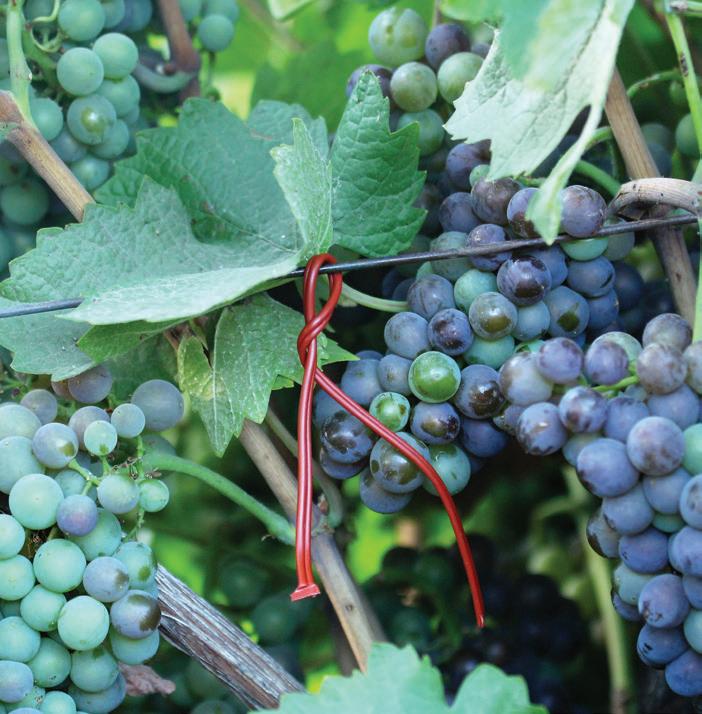
when conditions are cool and rainy. Under these environments, shoot infection also can occur. In particular, the atmospheric river events of 2023 appear to have greatly contributed to shoot infection, although the exact mechanism of such infection is unknown. Similarly, the mechanism of inoculum dispersal to pruning wounds is not known. However, it is presumed oospores and eventually zoospores and sporangia of P. syringae occurring in the soil and leaf litter are blown up into the tree canopy during high winds and heavy rain events, where they can then infect fresh pruning wounds and young shoots. Windrowing of harvested almonds using air-blowers in orchards creates substantial soil dust clouds that coat the surfaces of almond trees including shoots and branches. The soil dust carries the resting spores of P. syringae and essentially inoculate the tree with ContinuedonPage30



March / April 2024 www.progressivecrop.com 29
’
subsequent infections occurring during rain or any prolonged wetness events.
Almond pruning wounds can remain susceptible to infection by P. syringae for about four weeks after pruning (Doster and Bostock 1988c). Following infection, canker expansion occurs relatively quickly and is favored by cool temperatures. The optimum temperature of P. syringae is 59 to 68 degrees F (15 to 20 degrees C). Canker expansion slows down as temperatures increase in late spring and eventually stops completely above 73 degrees F (23 degrees C). Mycelium of the pathogen dies under hot summer temperatures. In the fall, fallen leaves on the almond orchard floor have been found to contain oospores of P. syringae (Doster and Bostock 1988a). The pathogen’s ability to colonize and form oospores in the leaf litter can be a mechanism for increasing and maintaining inoculum loads in the field and may contribute to the spread of P. syringae to other parts of the orchard or to neighboring orchards. The pathogen has a large host range occurring on plants of 24 genera in 14 families including lilac and commonly on plants in the family Rosaceae.
Disease Management
As mentioned previously, pruning wounds can remain susceptible to P. syringae infection for about four weeks after pruning if wounds are left unprotected. Previous research showed the application of a phosphonate product (i.e., fosetyl-Al1) directly to fresh pruning wounds was effective at preventing infection by P. syringae for at least four weeks following pruning (Doster and Bostock 1988b). Cupric hydroxide was less effective than phosphonate and caused some phytotoxicity at the pruning wound, resulting in clear gumming, xylem discoloration, excessive inner bark dieback and abnormal lignification (Doster and Bostock 1988b).
Curative management strategies to control aerial Phytophthora may involve chemical treatments of systemic fungi-
'When environmental conditions (e.g., atmospheric rivers, flooding) are favorable to aerial Phytophthora outbreaks, preventive applications of a phosphite compound may be considered.'
cides. These include potassium phosphite or other phosphonate compounds (e.g., Kphite®7LP, Fungi-Phite®) applied as foliar treatments or by chemigation, and mefenoxam (Ridomil Gold® SL) applied by chemigation. Mefenoxam provides protection by directly targeting the pathogen and disrupting certain biosynthetic pathways. Phosphite products provide plant protection through the induction of host plant defense against plant pathogens and by direct inhibition of growth. When environmental conditions (e.g., atmospheric rivers, flooding) are favorable to aerial Phytophthora outbreaks, preventive applications of a phosphite compound may be considered. High resistance to phosphonate fungicides, however, has been reported in P. syringae populations occurring on citrus but not yet on almond. Systemic fungicides may be applied as chemigation treatments as early as mid-March and no later than midMay in California in order to overlap with the timing of root flush of almond trees. Foliar applications with phosphonate fungicides can also be effective because the fungicide is systemic with both upward and downward mobility in the tree (i.e., ambimobile). Applications after May are less effective at controlling P. syringae since the disease and tree damage has already occurred and mycelium of the pathogen will die naturally with warm summer temperatures.
Recently, the new fungicide oxathiapiprolin (Orondis®) was shown effective and is labeled only for chemigation or soil application for the control of Phytophthora diseases of almond. This product may be used following flooding of an orchard, and before or shortly after planting almond trees to reduce
soil inoculum sources and risks of Phytophthora root and crown rot infection. Orondis® also has shown moderate systemic activity that can mitigate infection of the lower trunk. Nevertheless, oxathiapiprolin is not effective at managing aerial Phytophthora as the product is registered for soil applications and does not translocate above the tree crotch at registered labeled rates.
Aside from fungicides, certain cultural practices can be implemented to manage aerial Phytophthora. Indeed, the disease can be avoided by pruning outside of rainy periods. Lignification and healing of pruning wounds occurs naturally but it is faster under warm environmental conditions. Accordingly, best timing for pruning is after harvest in the early fall or during dry weather in the late winter or early spring when warmer conditions favor the rapid healing of pruning wounds. There are no cultivars completely resistant or tolerant to P. Syringae; however, susceptibility trials conducted in 1984-86 showed the cultivar Ripon was the least susceptible when compared to Nonpareil, Butte, Mission, Fritz, Carmel, Ne Plus Ultra and Thompson cultivars.
Disclaimer: Mentioning of any active ingredients or products is not an endorsement or recommendation. All chemicals must be applied following the chemical label, local and federal regulations. Please check with your PCA to confirm rates and site-specific restrictions. The authors are not liable for any damage from use or misuse.
Note: Fosetyl-Al is currently registered for use in nonbearing almond trees only. Please check with your PCA to confirm
30 Progressive Crop Consultant March / April 2024
ContinuedfromPage29
’
rates and site-specific restrictions. More information regarding chemicals used to control Phytophthora diseases can be found at the UC IPM website at http:// ipm.ucanr.edu/?src=www2
References
Adaskaveg, J.E., Hao, W., and Förster, H., 2015. Postharvest strategies for managing Phytophthora brown rot of citrus using potassium phosphite in combination with heat treatments. Plant Dis. 99:1477-1482.
Bostock, R.M., and Doster, M.A. 1985. Association of Phytophthora syringae with pruning wound cankers of almond trees. Plant Dis. 69:568-571.
Doster, M.A., and Bostock, R.M. 1988a. Incidence, distribution, and development of pruning wound cankers caused by Phytophthora syringae in almond orchards in California. Phytopathology 78:468-472.
Doster, M.A., and Bostock, R. M. 1988b. Chemical protection of almond pruning wounds from infection by Phytophthora syringae. Plant Dis. 72:492-494.
Doster, M.A., and Bostock, R.M. 1988c. Effects of low temperature on resistance of almond trees to Phytophthora pruning wound cankers in relation to lignin and suberin formation in wounded bark tissue. Phytopathology 78:478483.
Doster, M.A., and Bostock, R.M. 1988d. Susceptibility of almond cultivars and stone fruit species to pruning wound cankers caused by Phytophthora syringae. Plant Dis. 72:490-492.
Hao, W., Miles, T. D., Martin, F. N., Browne, G. T., Förster, H., Adaskaveg, J. E. 2018. Temporal occurrence and niche preferences of Phytophthora spp. causing brown rot of citrus in the Central Valley of California. Phytopathology 108:384-39.
Hao, W., Förster, H., Adaskaveg, J. E. 2021. Resistance to potassium phosphite in Phytophthora species causing citrus brown rot and integrated practices for
management of resistant isolates. Plant Dis. 105: 972-977.
O’Fallon, C., Belisle, R. J., Hao, W., Förster, H., Adaskaveg, J. E. 2022. Systemic movement of selected Oomycota fungicides effective against Phytophthora root and crown rots of almond and cherry. Phytopathology (abstr.) 112 (S3): 146
O’Fallon, C., Hao, W., Förster, H.,
Browne, G. T., Adaskaveg, J. E. 2023. Baseline sensitivities of new Oomycota fungicides for registration on almond for managing Phytophthora root and crown rots. Phytopathology (abstr.) 113 (S3): 24
Comments about this article? We want to hear from you. Feel free to email us at article@jcsmarketinginc.com

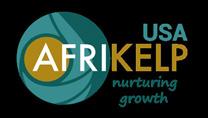
With our liquid seaweed extract “Afrikelp”, we take the time to find the best rate and time of applications to get you the best ROI in any crop.
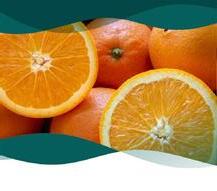

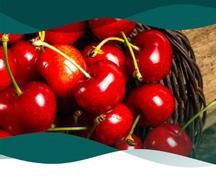

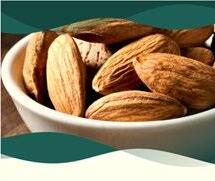




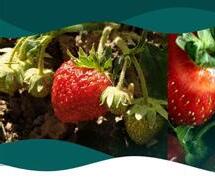
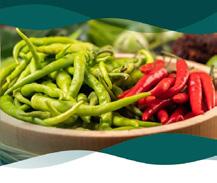

March / April 2024 www.progressivecrop.com 31
For more information visit us at www.afrikelp-usa.com or call us at (559) 515-6177.
California Code of Regulations Update: Neonicotinoids
By GREG MONTEZ | PCA
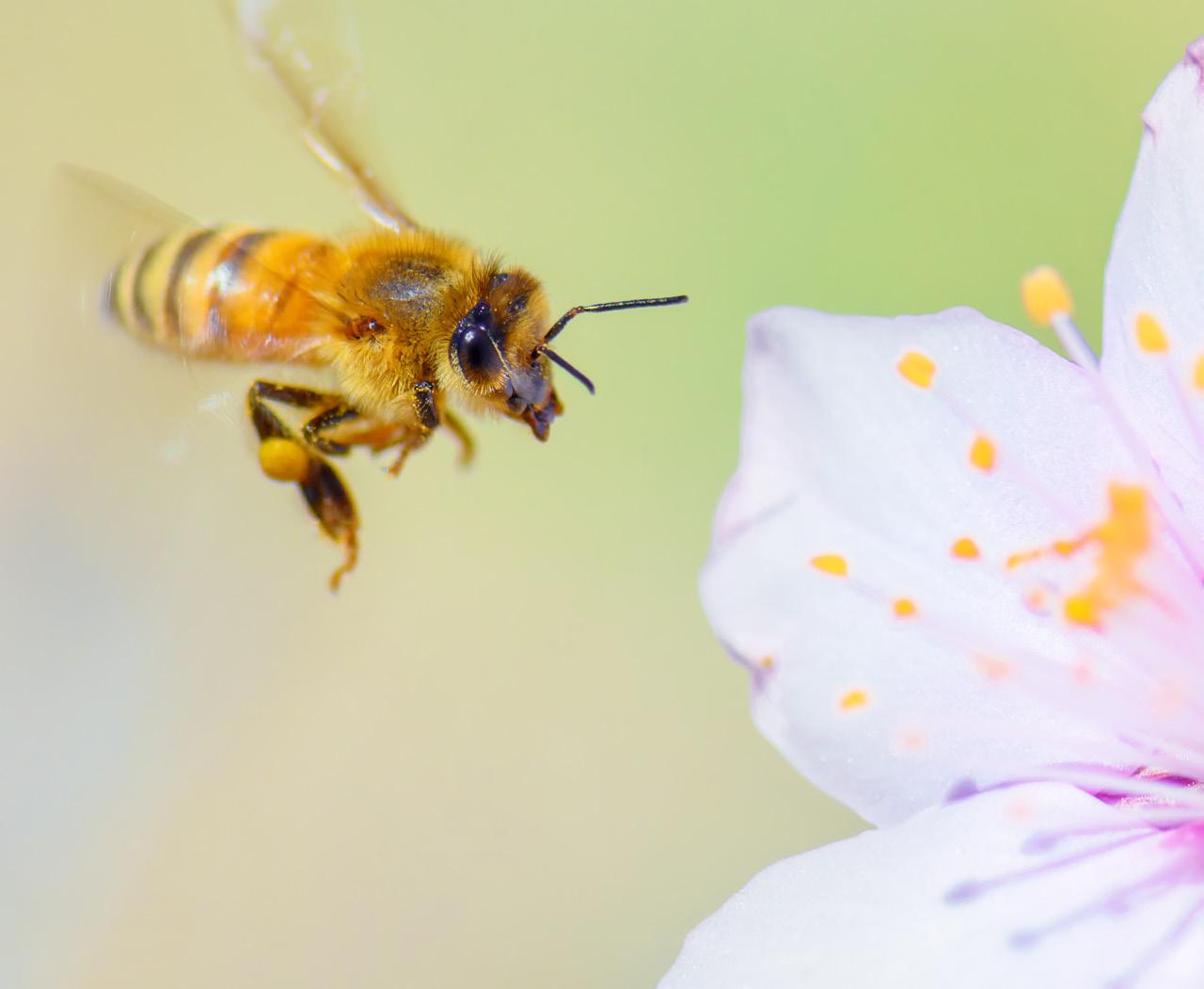
New regulations affecting the neonicotinoid class of insecticides address the type of application (soil or foliar), the number of permitted applications to a crop and the total pounds of active ingredient that may be used in a cropping season.
On Jan. 1, 2024, an update to California Code of Regulations went into effect addressing the use of the neonicotinoid class of insecticides on crops grown in California. The updated regulation covers clothianidin, dinotefuran, imidacloprid and thiamethoxam.
The California Department of Pesticide Regulation has stated it has adopted these regulations to protect pollinators from risks of exposure to neonicotinoids in agricultural crops. The updated regulation covers soil and foliar applications of products containing any of the listed active ingredients to certain crops grown in California. The regulation does
not cover applications to crops grown in enclosed areas such as greenhouses or which are covered with insect exclusion netting if the conditions stated in the regulations are met. Also exempt are applications to address a local declared emergency to control a declared quarantine pest, a “Section 18” emergency, treatments made to control a quarantine pest, research and development work with authorization from the DPR, and non-agricultural uses.
The regulations address the type of application (soil or foliar), the number of permitted applications to a crop and the total pounds of active ingredient
that may be used in a cropping season. These may vary depending on the crop grown so it is extremely important for pest control advisors, growers, and applicators to make themselves aware of the new restrictions. Crop advisors and growers need to be aware reduced rates of application may result in poor insect control or increase the possibility of insecticide resistance development. It is therefore highly recommended that the rate, method of application and timing of these neonicotinoid products be reviewed and discussed prior to use. Detailed information on each crop may be found by contacting a local UCCE crop advisor, the County Agricultural
32 Progressive Crop Consultant March / April 2024

Commissioner’s office or the California grower and the applicator to ensure
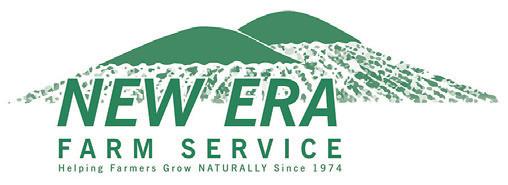
California Department of Pesticide Regulation, County Agricultural
California Licensed Pest Control
educating growers and applicators review application rates and timing
‘The only neonicotinoids affected by the updated regulations are imidacloprid, clothianidin, dinotefuran
Comments
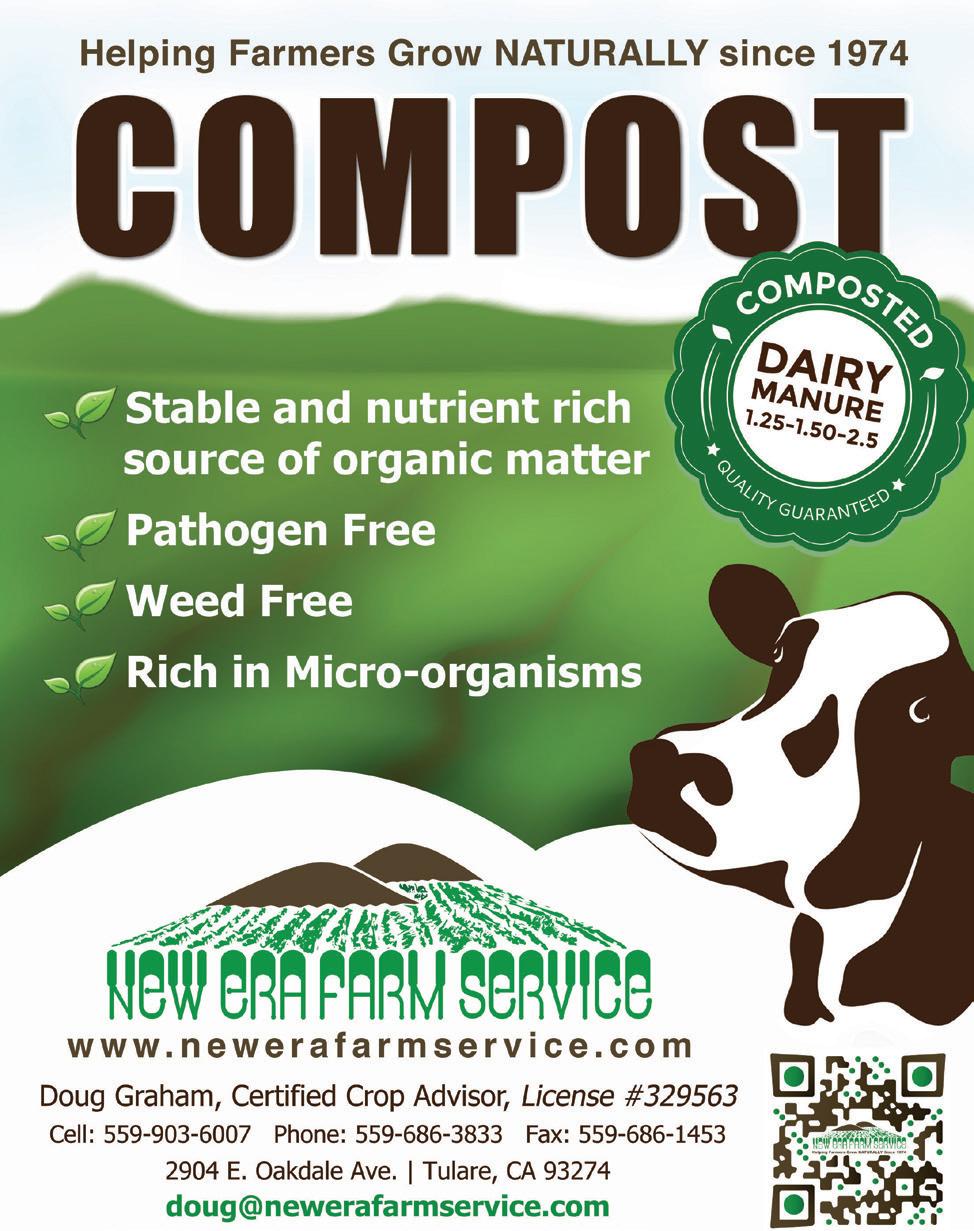


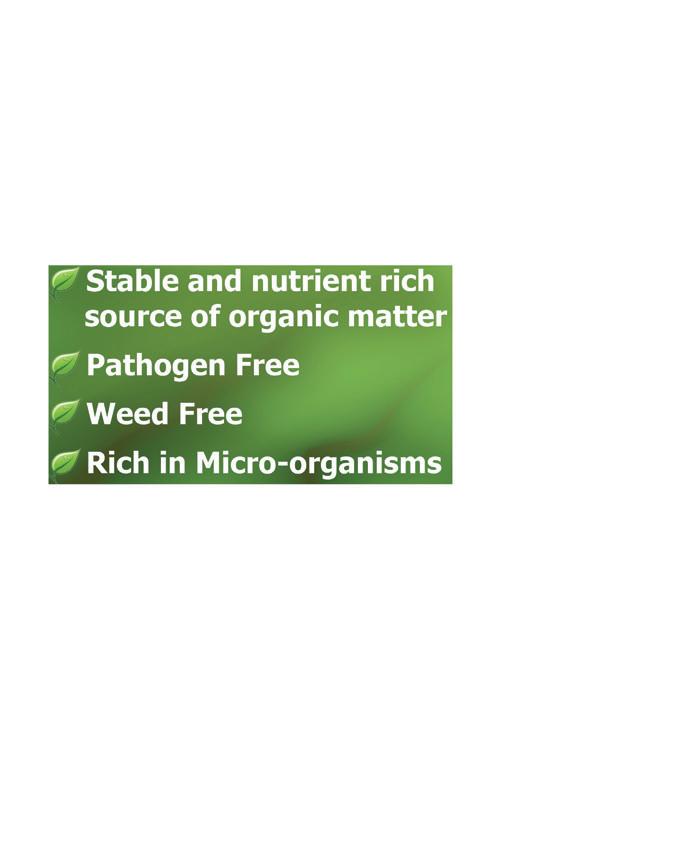
this article?
from
Feel free to
us at O ce: 559-686-3833 Fax: 5 59-686-1453 2904 E. Oakdale Ave. | Tulare, CA 93274 newerafarmservice .com Helping Farmers Grow NATURALLY Since 1974
about
We want to hear
you.
email
Industry One Reader at a Time
By JASON SCOTT, MS | Publisher/CEO, Progressive Crop Consultant, JCS Marketing
Inc.
Readership studies play a crucial role in the agricultural sector, particularly for specialized industries like crop consulting. These studies help publications like Progressive Crop Consultant understand their audience better, enabling them to tailor content to the specific needs and interests of CCAs, PCAs, professional agronomists, soil specialists and more. This targeted approach is vital for fostering a thriving agriculture industry.
Firstly, readership studies provide valuable insights into the preferences and information needs of industry professionals. By analyzing data on what topics are most read and appreciated, Progressive Crop Consultant can focus on producing relevant and engaging content. This could range from the latest pest management strategies to water and nutrition. Such information not only keeps readers informed but also helps them make better decisions for their growers and themselves, ultimately leading to improved crop yields, quality and business success.
In a recent Baxter Research Center media study in Progressive Crop Consultant, 48 CCAs, PCAs, professional agronomists, soil specialists and more shared overwhelmingly positive feedback.
“Good up-to-date information,” said one respondent.
“Very good articles written by unbiased experts and contributors,” said another respondent.
“These [articles] allow me to discuss with my customers and find out what possible purchasing strategies there might be,” another said.
Secondly, readership feedback is essential for fostering a sense of community within the industry. When crop consultants actively participate in readership studies, they contribute to the creation of a publication that truly represents their collective voice and concerns. This collaboration can lead to the sharing of innovative ideas, experiences and best practices, further strengthening the industry as a whole.
Moreover, providing feedback to Progressive Crop Consultant can help address specific challenges faced by the industry. For instance, concerns about climate change, pest management or water can be highlighted and addressed through in-depth articles and expert opinions. By understanding these issues, the magazine can play a pivotal role in advocating for the industry and influencing policy decisions that benefit consultants and ultimately growers.
In conclusion, readership studies are indispensable for a niche publication like Progressive Crop Consultant. They enable the publication to produce content that is not only informative and engaging but also directly relevant to the needs of the industry. Crop consultants should actively participate in these studies to ensure their voices are heard and the publication continues to be a valuable resource for the industry’s growth and success.
“ “KEEPS OUR PCA STAFF INFORMED BETWEEN TIMES OF SEEING REPS, OR OF NEW TECH ON THE HORIZON,” -CORY T. “
Comments about this article? We want to hear from you. Feel free to email us at article@ jcsmarketinginc.com
“ “UP-TO-DATE INFORMATION ON CURRENT ISSUES IN CROP PRODUCTION,” -DON P. “ “ “I BELIEVE THE SINCERITY,” -J.W. L.
“I READ PROGRESSIVE CROP CONSULTANT DUE TO ITS INFORMATIVE, AGRONOMIC ARTICLES. I ESPECIALLY LOOK FOR THOSE ARTICLES TIED TO ANYTHING RELATED TO PLANT/SOIL NUTRITION AND IRRIGATION WATER MANAGEMENT,” -FRANCISCO R.
“
34 Progressive Crop Consultant March / April 2024
WHAT OUR READERS
SAYING: Growing the Crop Consultant
ARE



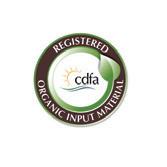


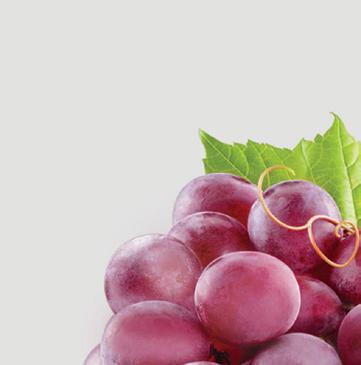

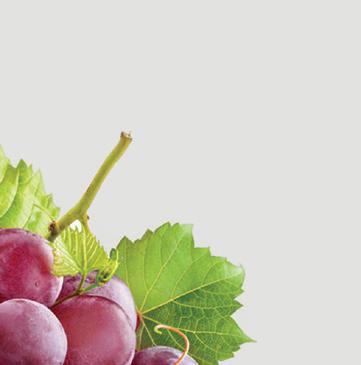
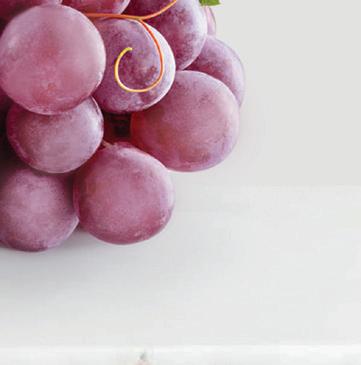




(Actually
there’s a bunch of reasons)

The reason most growers choose Kelpak?


For starters, Kelpak Liquid Seaweed Extract improves the plant’s tolerance to abiotic stress and when young vines are planted-out, transplant shock is reduced. Kelpak also improves berry size uniformity, first pick yields as well as class #1 bunch yields. Trials conducted on 6 varieties between 2014 and 2023 showed a 9-year average yield increase of 24%. Ultimately Kelpak provides the grower with excellent returns and peace-of-mind. Kelpak is certified for use on organic crops.



















March / April 2024 www.progressivecrop.com
SCAN F OR MO R E IN F O R MATION VISIT OUR W EBSI T E K ELPA K USA.COM OR CALL US ON : 209-450-5117 For use in Organic Agriculture Washington S ate Dept. of Agriculture or i

DRIVES CARBOHYDRATE PRODUCTION WITHIN THE PLANT www.agroplantae.com



















































































































































